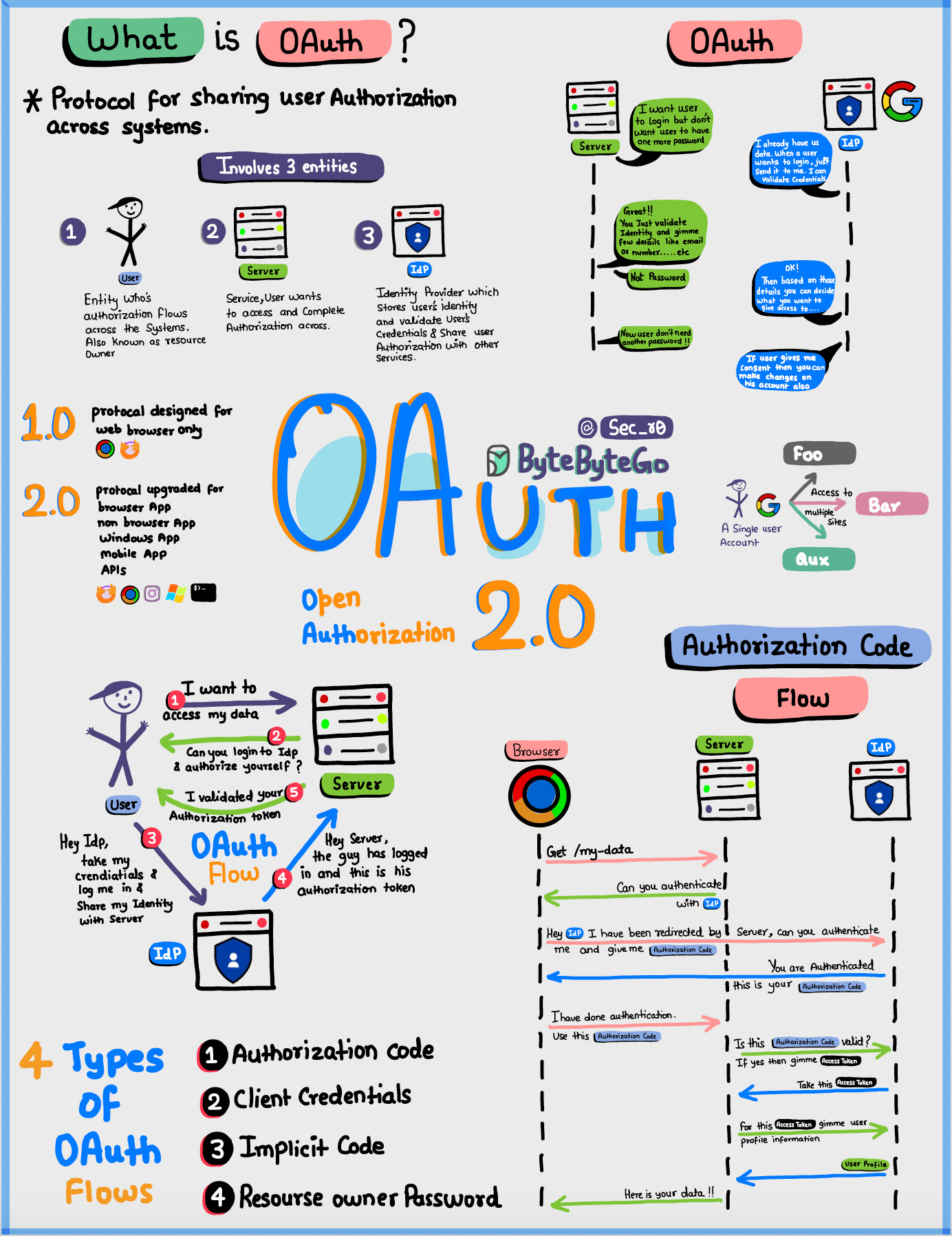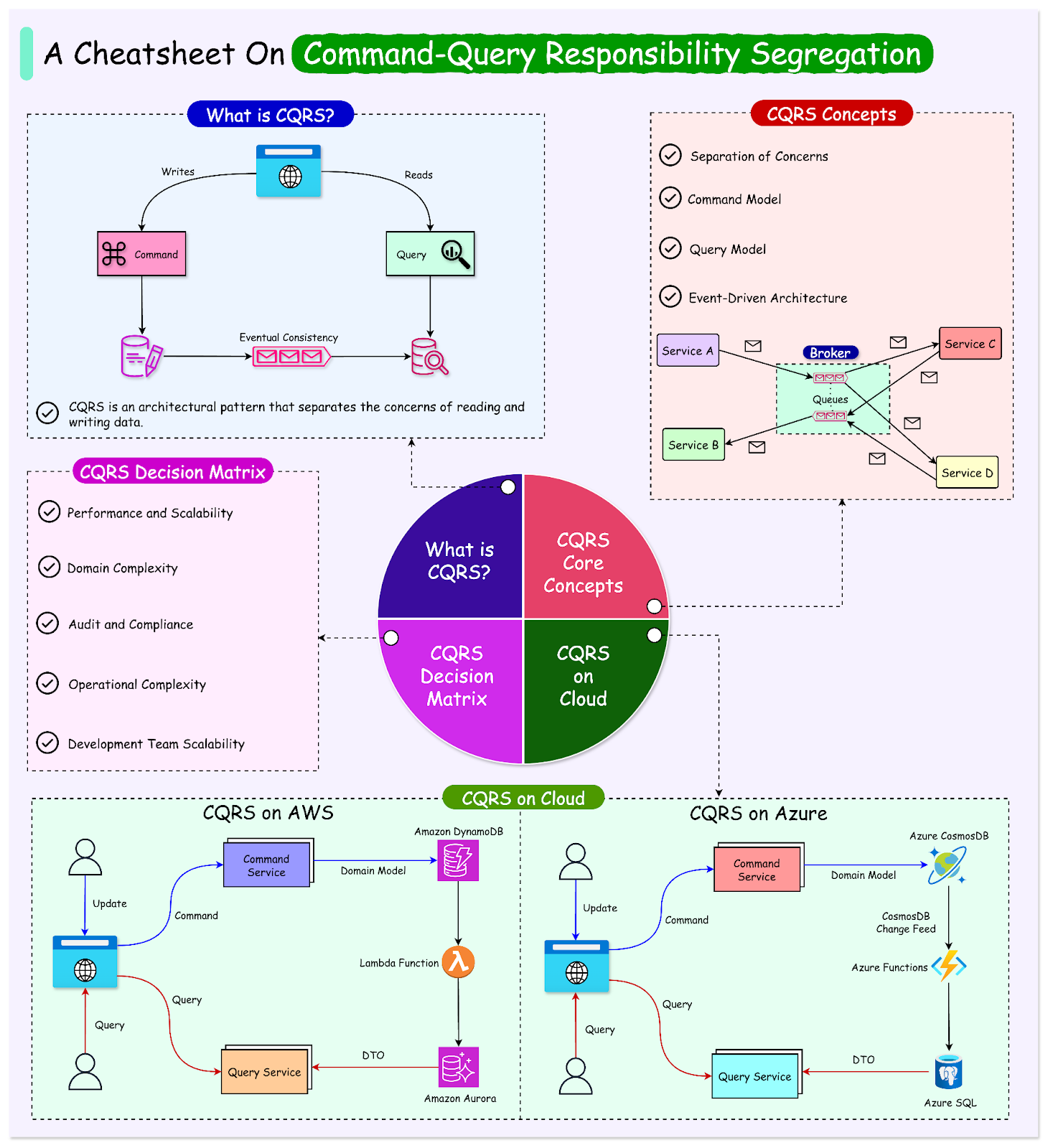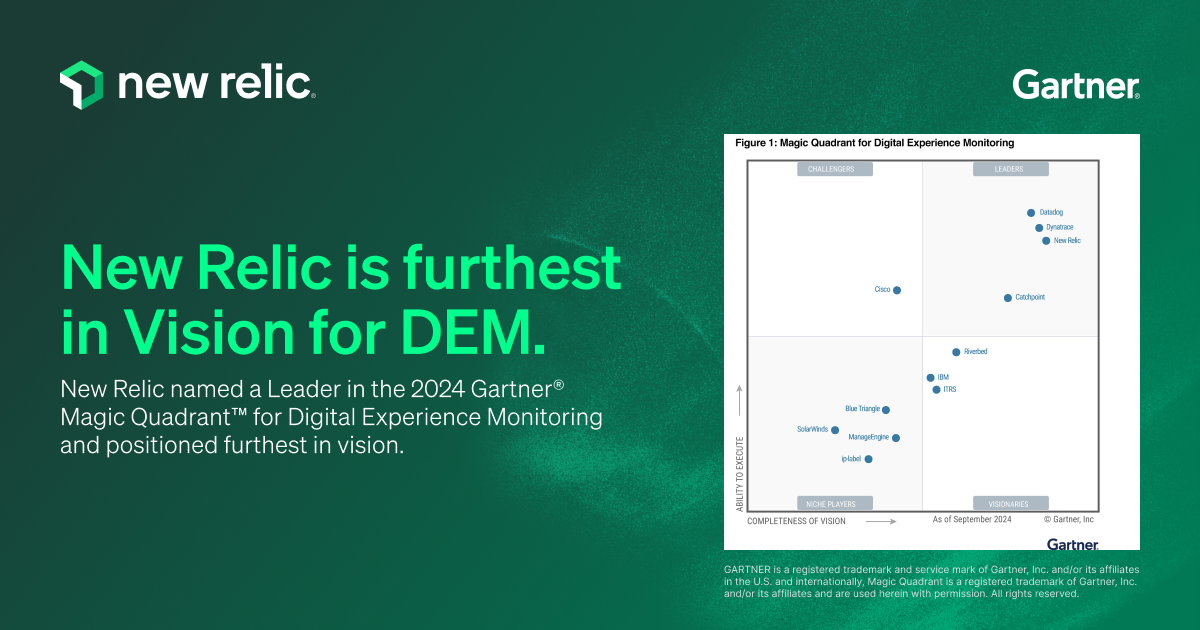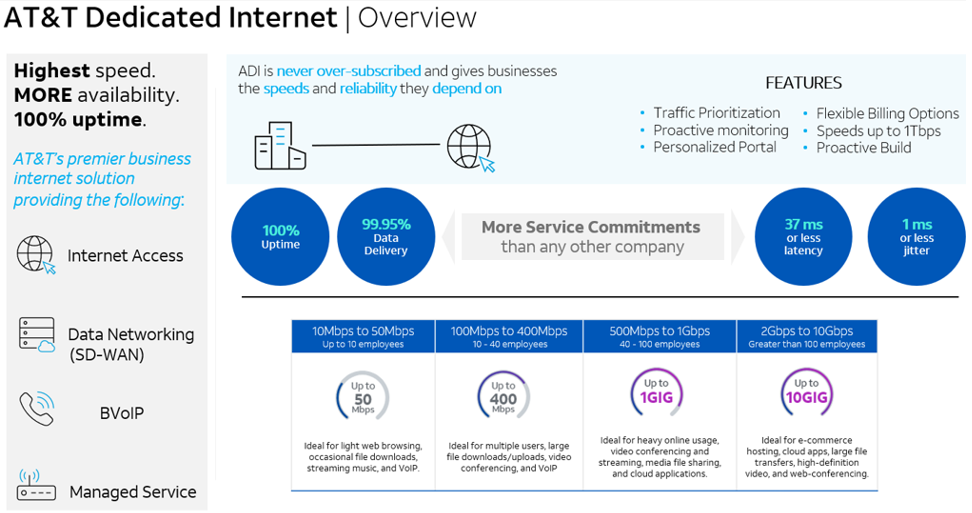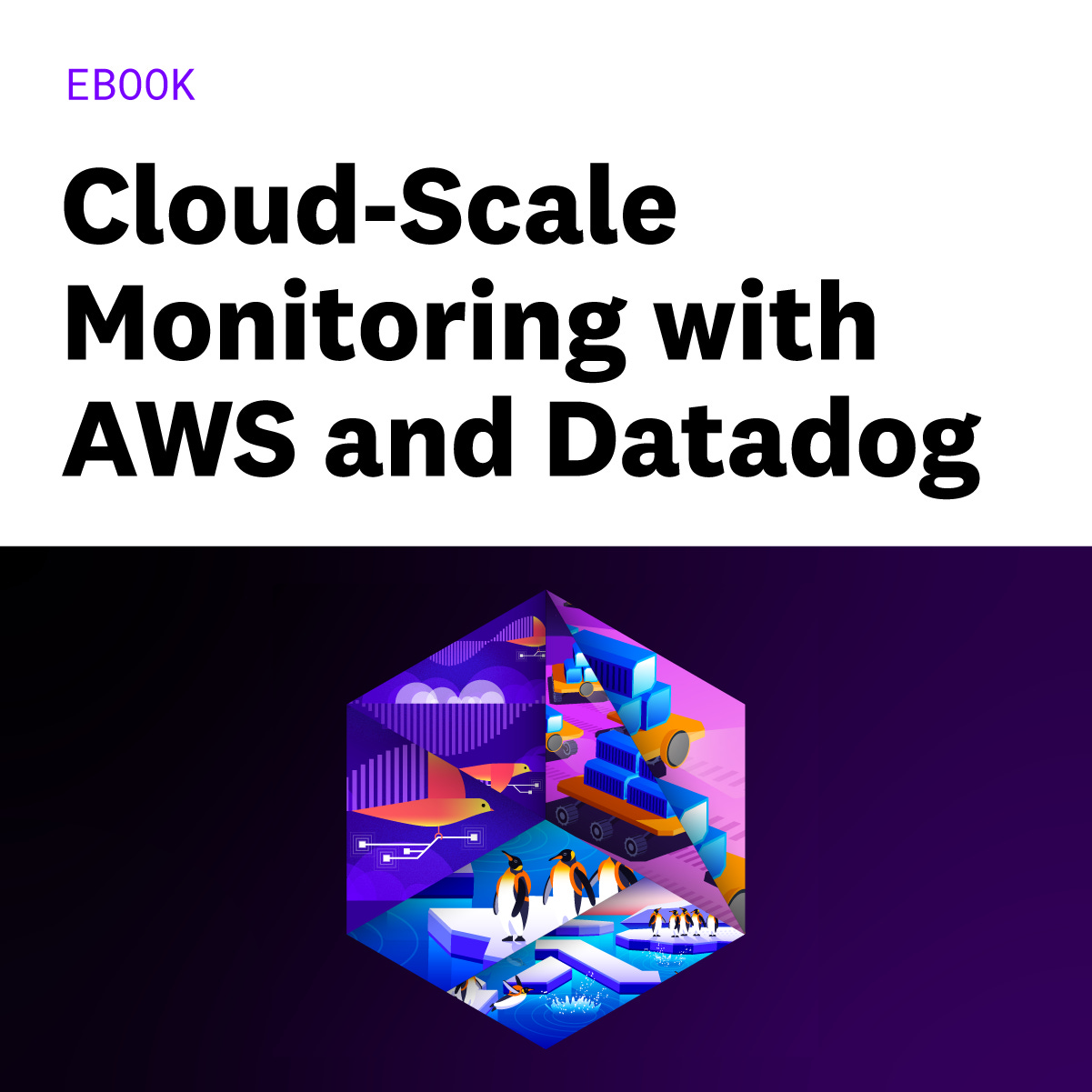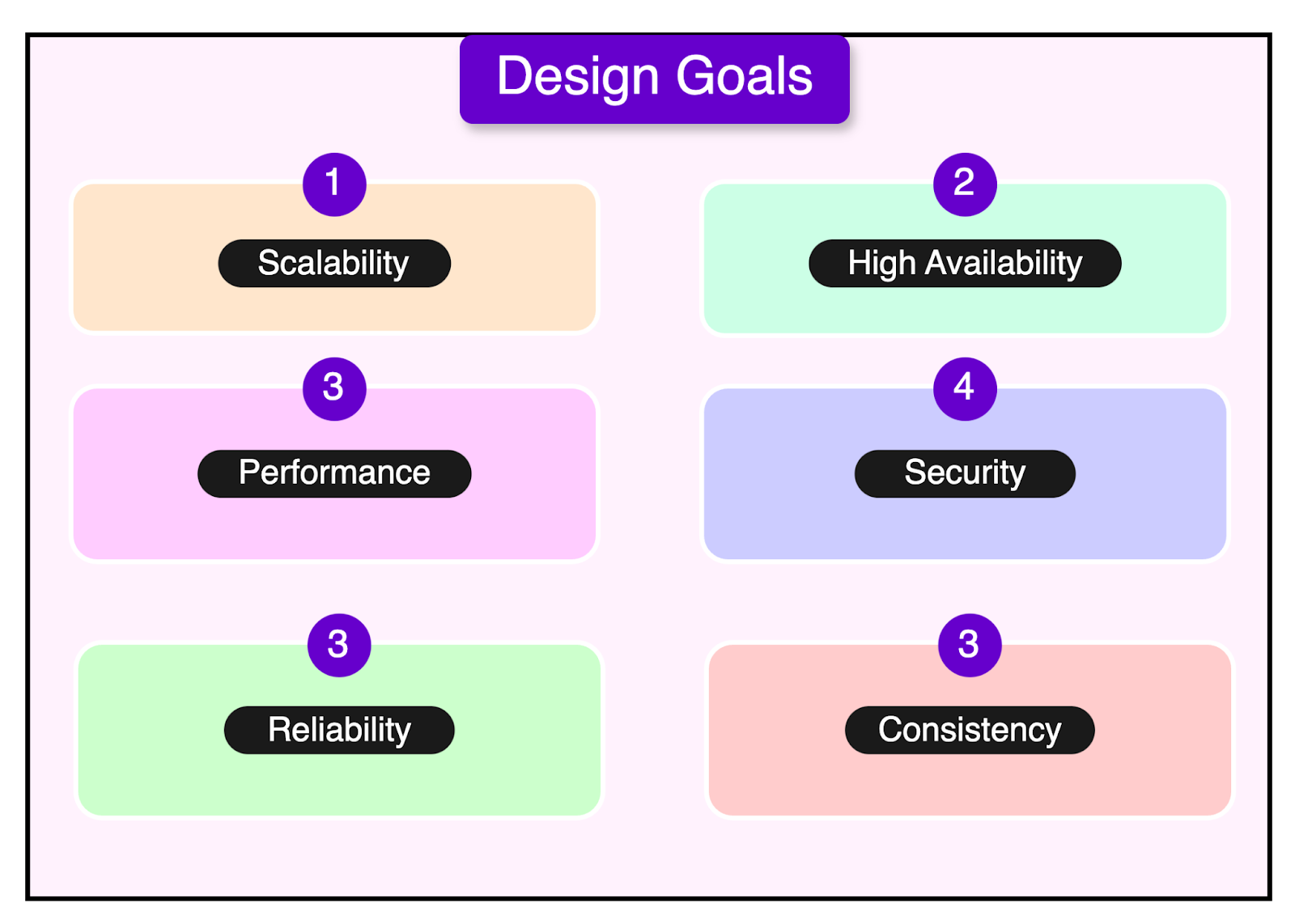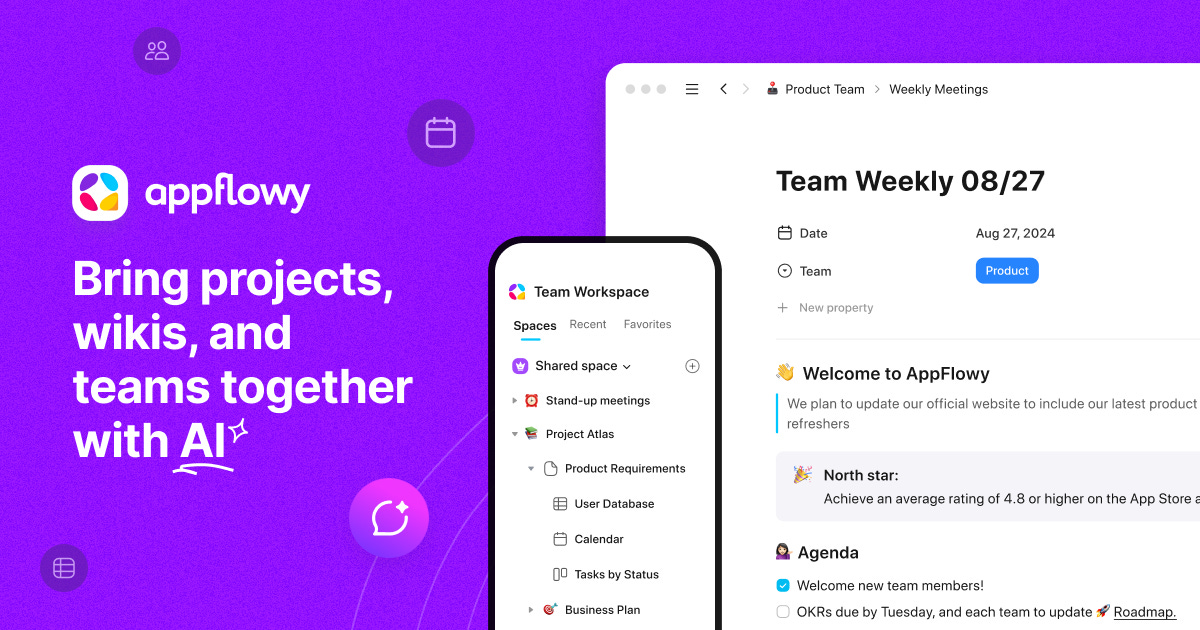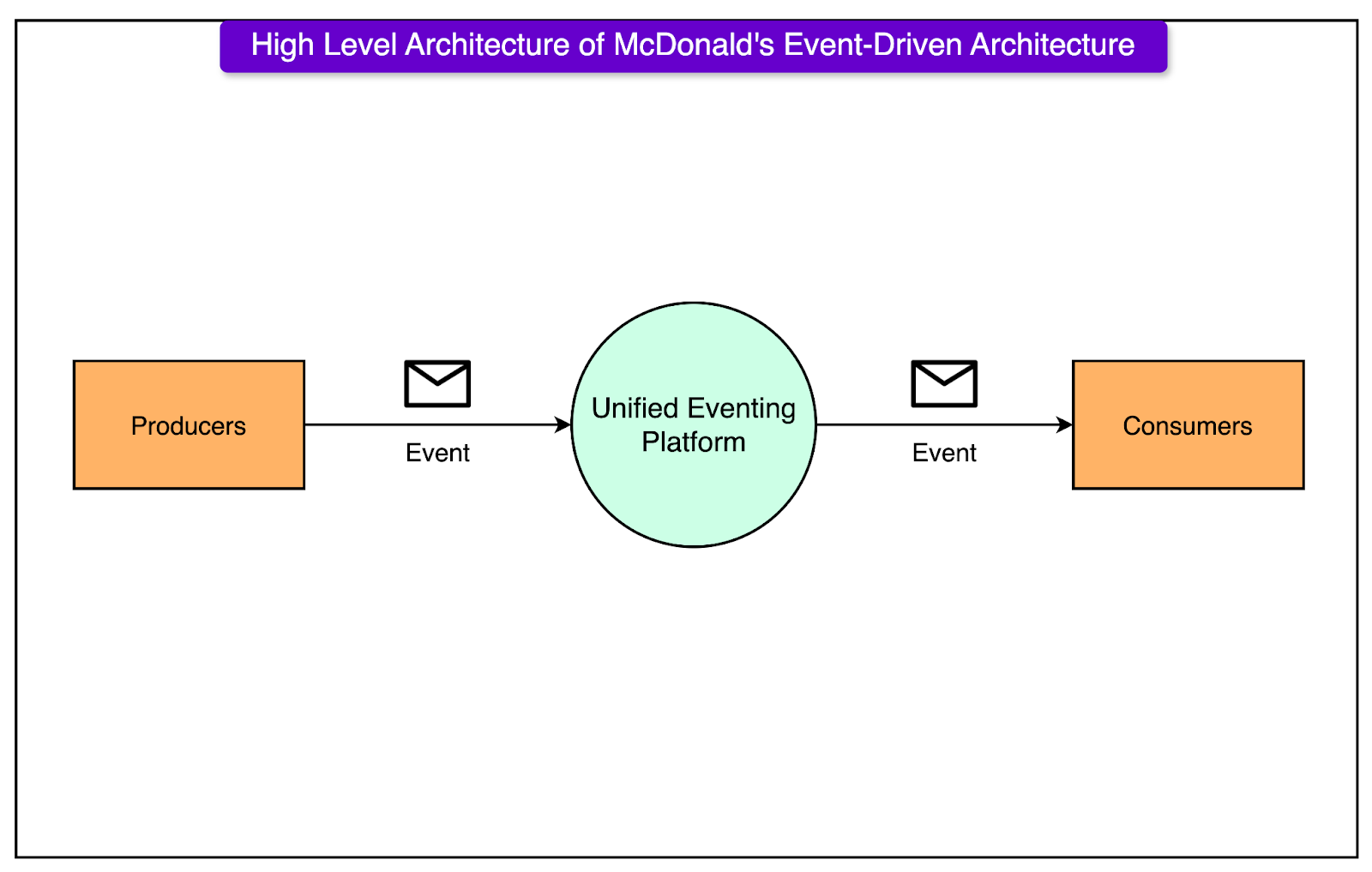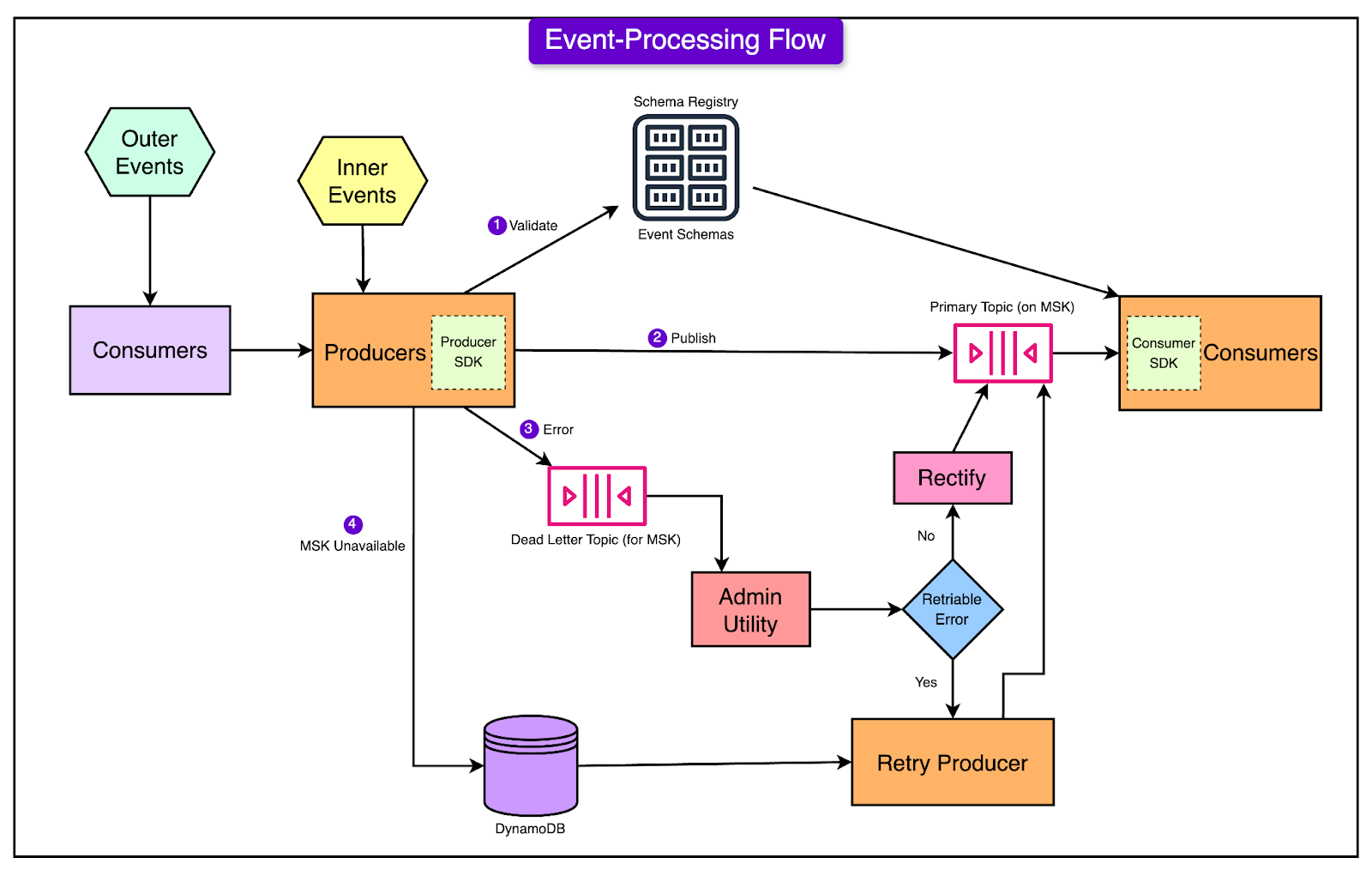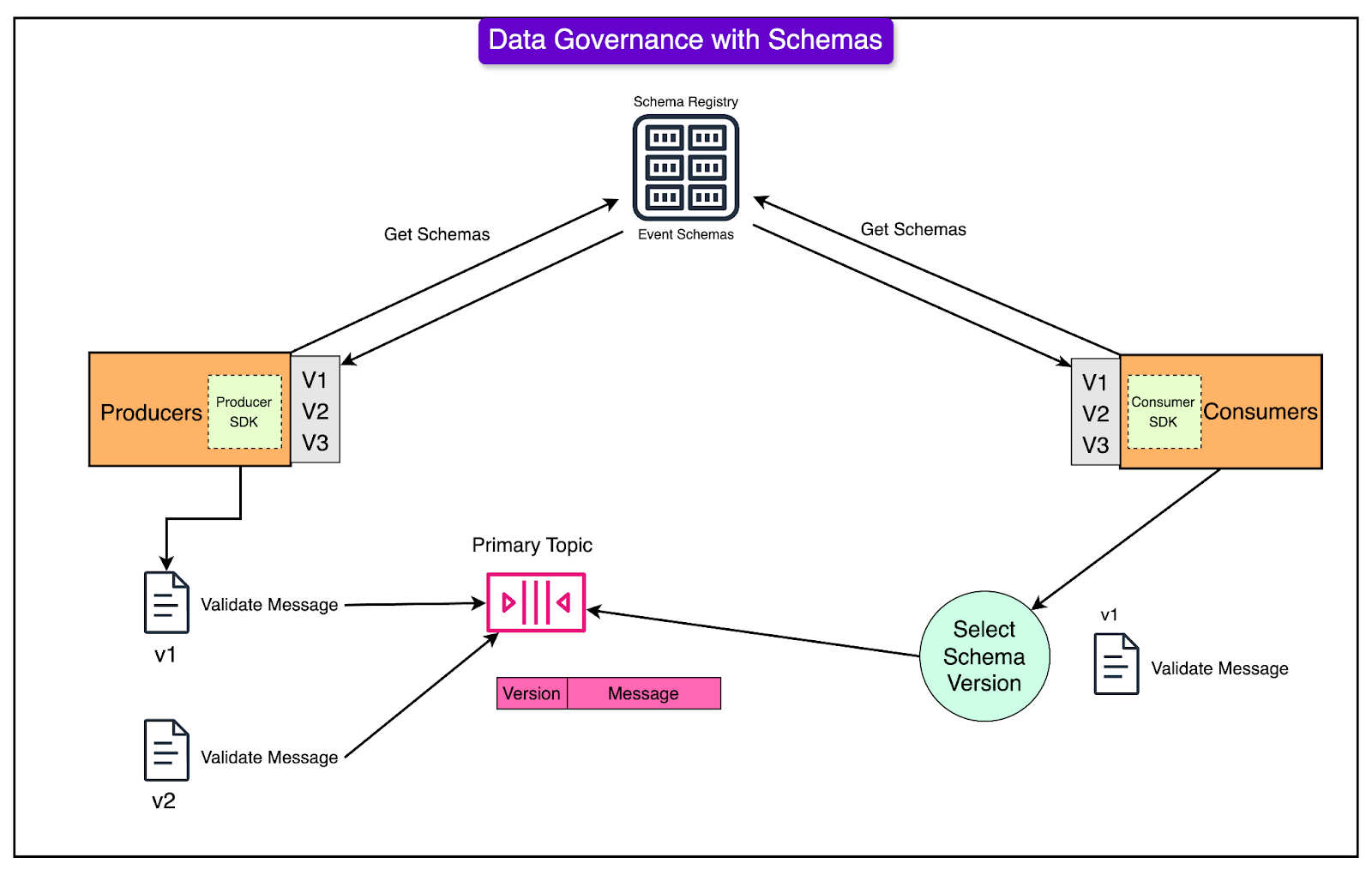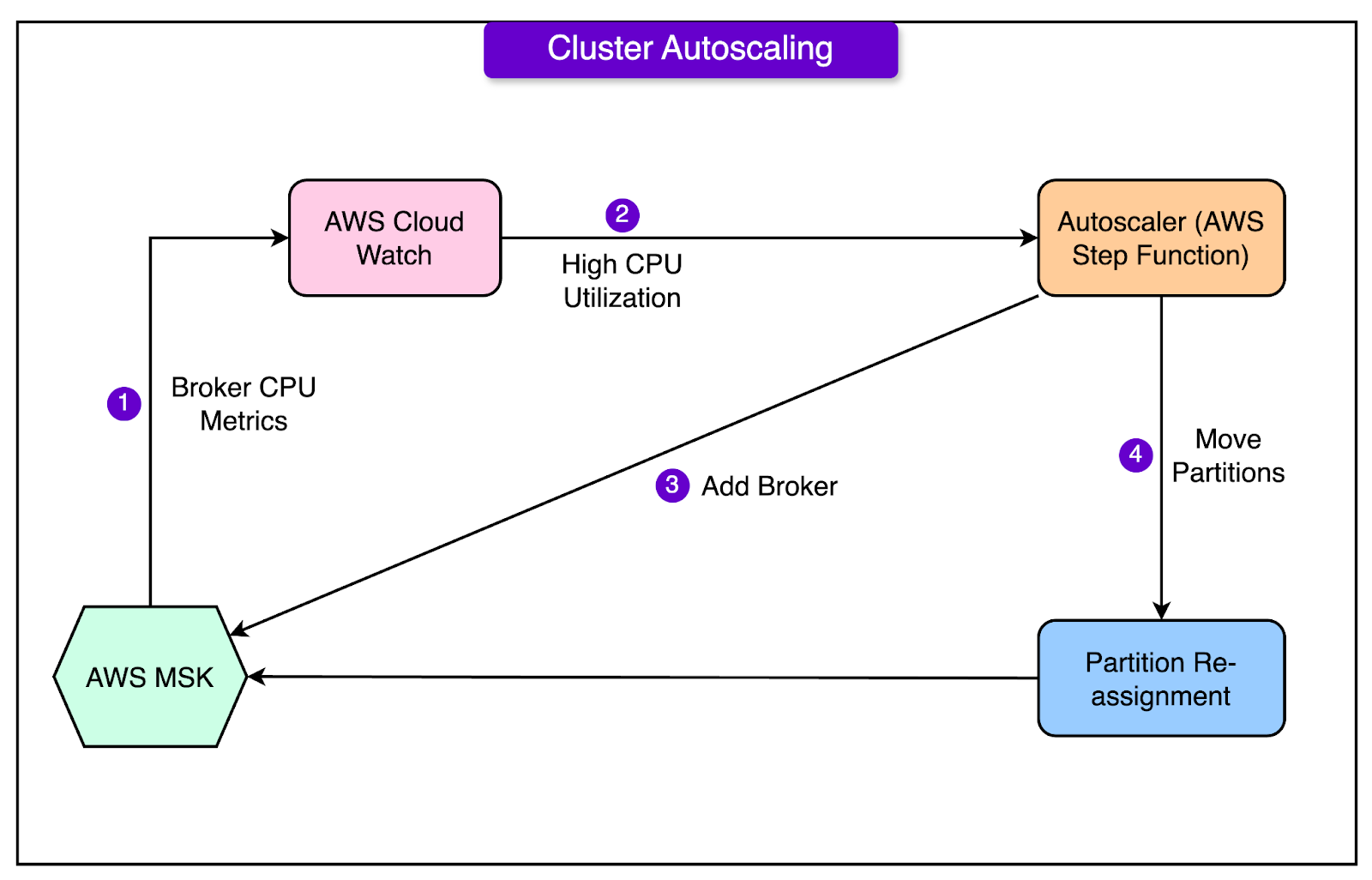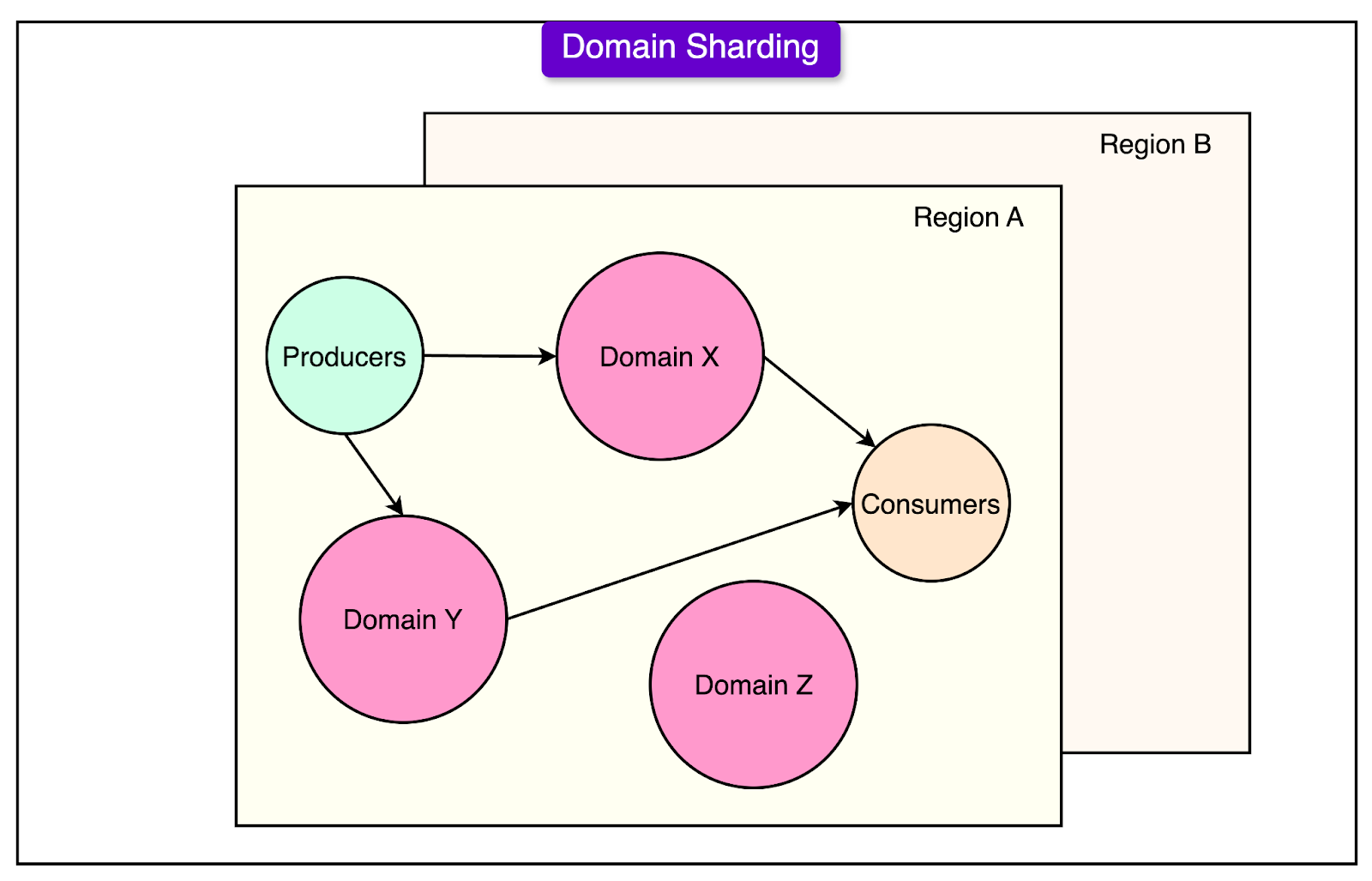Archives
- By thread 5363
-
By date
- June 2021 10
- July 2021 6
- August 2021 20
- September 2021 21
- October 2021 48
- November 2021 40
- December 2021 23
- January 2022 46
- February 2022 80
- March 2022 109
- April 2022 100
- May 2022 97
- June 2022 105
- July 2022 82
- August 2022 95
- September 2022 103
- October 2022 117
- November 2022 115
- December 2022 102
- January 2023 88
- February 2023 90
- March 2023 116
- April 2023 97
- May 2023 159
- June 2023 145
- July 2023 120
- August 2023 90
- September 2023 102
- October 2023 106
- November 2023 100
- December 2023 74
- January 2024 75
- February 2024 75
- March 2024 78
- April 2024 74
- May 2024 108
- June 2024 98
- July 2024 116
- August 2024 134
- September 2024 130
- October 2024 141
- November 2024 171
- December 2024 115
- January 2025 216
- February 2025 140
- March 2025 220
- April 2025 233
- May 2025 239
- June 2025 303
- July 2025 176
-
Access the Right Business Contacts
Hi,
Would you be interested in B2B Contacts with direct emails/direct dials?
• Industries: - Healthcare, Technology, Financial, Transportation, Retail, Media, Manufacturing, Aerospace, Automotive, Hospitality, Electronics, Food & Beverage, Construction, Educational, HVAC, Leasing etc.
• Job Titles: - C, V & D level, Management level, Head & Managers, IT Dept., Marketing, Traders, Procurement Dept., HR etc.
Let me know your target audience/list requirements in the below format:
Target Industries:
Target Job Titles:
Target Geography:
Based on your requirements we can get on call to discuss further.
Best Regards,
Anna
Marketing Manager
Disclaimer: This e-mail is confidential. If you have received this in error, please disregard. Respond Unsubscribe.
by "Annabelle Cruz" <annabelle.cruz@progressivelead.com> - 12:57 - 7 Nov 2024 -
A Pattern Every Modern Developer Should Know: CQRS
A Pattern Every Modern Developer Should Know: CQRS
CQRS, which stands for Command Query Responsibility Segregation, is an architectural pattern that separates the concerns of reading and writing data.͏ ͏ ͏ ͏ ͏ ͏ ͏ ͏ ͏ ͏ ͏ ͏ ͏ ͏ ͏ ͏ ͏ ͏ ͏ ͏ ͏ ͏ ͏ ͏ ͏ ͏ ͏ ͏ ͏ ͏ ͏ ͏ ͏ ͏ ͏ ͏ ͏ ͏ ͏ ͏ ͏ ͏ ͏ ͏ ͏ ͏ ͏ ͏ ͏ ͏ ͏ ͏ ͏ ͏ ͏ ͏ ͏ ͏ ͏ ͏ ͏ ͏ ͏ ͏ ͏ ͏ ͏ ͏ ͏ ͏ ͏ ͏ ͏ ͏ ͏ ͏ ͏ ͏ ͏ ͏ ͏ ͏ ͏ ͏ ͏ ͏ ͏ ͏ ͏ ͏ ͏ ͏ ͏ ͏ ͏ ͏ ͏ ͏ ͏ ͏ ͏ ͏ ͏ ͏ ͏ ͏ ͏ ͏ ͏ ͏ ͏ ͏ ͏ ͏ ͏ ͏ ͏ ͏ ͏ ͏ ͏ ͏ ͏ ͏ ͏ ͏ ͏ ͏ ͏ ͏ ͏ ͏ ͏ ͏ ͏ ͏ ͏ ͏ ͏ ͏ ͏ ͏ ͏ ͏ ͏ ͏ ͏ ͏ ͏ ͏ ͏ ͏ ͏ ͏ ͏ ͏ ͏ ͏ ͏ ͏ ͏ ͏ ͏ ͏ ͏ ͏ ͏ ͏ ͏ ͏ ͏ ͏ ͏ ͏ ͏ ͏ ͏ ͏ ͏ ͏ ͏ ͏ ͏ ͏ ͏ ͏ ͏ ͏ ͏ ͏ ͏ ͏ ͏ ͏ ͏ ͏ ͏ ͏ ͏ ͏ Forwarded this email? Subscribe here for moreLatest articles
If you’re not a subscriber, here’s what you missed this month.
To receive all the full articles and support ByteByteGo, consider subscribing:
CQRS, which stands for Command Query Responsibility Segregation, is an architectural pattern that separates the concerns of reading and writing data.
It divides an application into two distinct parts:
The Command Side: Responsible for managing create, update, and delete requests.
The Query Side: Responsible for handling read requests.
The CQRS pattern was first introduced by Greg Young, a software developer and architect, in 2010. He described it as a way to separate the responsibility of handling commands (write operations) from handling queries (read operations) in a system.
The origins of CQRS can be traced back to the Command-Query Separation (CQS) principle, introduced by Bertrand Meyer. CQS states that every method should either be a command that performs an action or a query that returns data, but not both. CQRS takes the CQS principle further by applying it at an architectural level, separating the command and query responsibilities into different models, services, or even databases.
Since its introduction, CQRS has gained popularity in the software development community, particularly in the context of domain-driven design (DDD) and event-driven architectures.
It has been successfully applied in various domains, such as e-commerce, financial systems, and collaborative applications, where performance, scalability, and complexity are critical concerns.
In this post, we’ll learn about CQRS in comprehensive detail. We will cover the various aspects of the pattern along with a decision matrix on when to use it.
Core Concepts of CQRS
The overall CQRS pattern is made up of a few core concepts:...

Continue reading this post for free in the Substack app
Like
Comment
Restack
© 2024 ByteByteGo
548 Market Street PMB 72296, San Francisco, CA 94104
Unsubscribe
by "ByteByteGo" <bytebytego@substack.com> - 11:35 - 7 Nov 2024 -
IPC WHMA 620: WIRE HARNESS TRAINING ( 2 Days INHOUSE Program)
IPC WHMA 620: WIRE HARNESS TRAINING
(IPC/WHMA-A-620, Requirements and Acceptance for Cable and Wire Harness Assemblies)
This program can be specially tailored and customized to meet your training objectives
Kindly find above attached for the full brochure for this program
We hope you find it informative and interesting, and we look forward to seeing you soon
(SBL Khas / HRD CORP Claimable Course)
2 Days In-House Program By Gobalan
INTRODUCTION:
This IPC WHMA 620 Program is a 2 day training that will provide the participants with knowledge and skills required in understanding all aspects of IPC WHMA 620 standards including product classifications, components and solderability accept / reject criteria, defects categories and etc. It gives the participants the knowledge and competence required to negotiate better with customers in line with IPC and ISO 9000 series standard requirements.
PROGRAM OBJECTIVE:
After the 2 days training, participants shall enhance knowledge and skills in the following fields:
- IPC WHMA 620 terminologies, terms, and definitions.
- IPC standards and it’s requirements
- Form, Fit and Function of the product quality standard.
- Accept and Reject criteria of electronic components and solderability in wire soldering and interconnects including wire harness.
- Educate production technicians in proper basic cut/strip/crimp/insert connector methodology and inspections criteria.
- To ensure technicians understand IPC standard class 1, 2 and 3 requirements. Focus will be more on Class 2 built product requirement.
- To equip production technicians to gear up to the “IPC620 Industrial Standard” and prepare them for in-house and on-site jobs.
- Competency in IPC WHMA 620 and great negotiating skills with customer on return goods criteria
- Know all applicable documents as per IPC WHMA 620.
- Production technicians to achieve a certificate of competency in IPC WHMA 620 at end of training.
WHO SHOULD ATTEND:
Production and Process Technicians
TRANING METHODOLOGY:
Participants will be involved in 60% lectures and 40% group and team discussions with exercises and selected video clips for skills enhancement.
There will be line tour and audit on process WHMA 620 for continuous improvements (optional)
Day 1: 9.00am to 5.00pm
- Pre test assessment
- Introduction to IPC WHMA 620
- Introduction to Standards
- 4W1H
- IPC 620 requirement
- 3Fs: Form, Fit and Function
- Form: Components shape, size, value and body conditions
- Fit: Placement accuracy
- Function: Electrical characteristics, working condition and defects
- Product classifications
- Class 1: Stand alone
- Class 2: System control
- Class 3: Costly and Life at stake
- IPC 620 workmanship standards: Manual guided summary study
- Reject and Acceptance criteria: Wires, Hardware, Crimping, Soldering and others
- Handling wire harness and electronic assemblies
- Hardware classifications
- Basic wires: Insulation, conductor, tinning
- Power cords: Wire colour codes
- Wire preparation: Single core, Multicore and Coaxial wire and cables
- Crimping techniques: Single core and Multicore wires
- Accept reject criteria.
- Coaxial connector: Assemble, Inspection and Testing
- Basic soldering techniques - Wire and Connectors
- Solder quality and its standards
- Terminal connections
- Through hole technology
- Chip components soldering
- Components damages and Samples
Day 1: 9.00am to 5.00pm
- Revision: Day 1 lessons
- Discrete wirings: Single core and Muliticore
- Wire dressings and arrangement
- High voltages
- Safety: Wire harness products
- Job risk analysis
- Soldering practical exercises: Score sheet assessment with soldering instructions and evaluation. Practice 3 trial attempts. Trainer check, give score and provide constructive feedback on quality of soldering done.
o Practice 1: Wires - Preparation, Tinning, Soldering
o Practice 2: Coaxial cable preparation, Inspection and Testing
o Practice 3: PTH components de-soldering and soldering
o Practice 4: Chip components de-soldering and soldering
o Practice 5: RF components de-soldering and soldering
o Practice 6: Wires and Slugs Crimping and Sleeving
o Overall feedback and assessment summary.
- 2 days training summary
- Post test assessment
- Pre and Post test review and scores.
- Training evaluation
Tools and Training Accessories Required: Arranged by client company
- Soldering rework station: Complete set up for soldering practice
- Crimping tools
- Wires: Single core and Multicore
- RF coaxial cable (TV aerial signal coaxial cable head: Male and Female)
- Slugs – Assorted size
- PCB blank for soldering components and wires
- PTH components: Electrolytic capacitor, Resistor, Chip components
- Wires 1 feet long assorted colours – quantity 5 each for each trainee.
- Nylon lacing cord: 1 roll
ABOUT THE FACILITATOR
Gobalan Senthivel is a Professional HRM, Training and Development consultant. Worked and trained 22 years in the Royal Malaysian Air Force, 4 years in OEM industry and 24 years in EMS industry, as a Technical / Soft skills Manager, Trainer, Facilitator and Corporate Consultant.
A Radar Engineering graduate, trained from No 1, Radio School, RAF Locking in UK. Post graduate studies in Advanced Radio Communication and Radar Systems Electronics at RAAF Laverton, Australia, Post graduate placement training in Airfield Radar System and Technology at NEC and Toshiba, Japan.
Master’s degree holder in Business Administration from Lincoln School of Business, USA and Diploma in Training and Development from Leicester University, UK. Experiences cover great deal in training military personnel in Technical skills. OEM and EMS industry people in Product based skills, Soft skills, Supervisory, Management, Talent, and Leadership skills.
Royal Malaysian Air Force and Royal Australian Air Forces was a chief engineer involved in Defence Radar Equipment installations, Commissioning, Repair and Maintenance. In addition, was involved in repair and maintenance of Airfield Instrument Landing systems in Butterworth, Kuantan, and Labuan air bases. Highly knowledgeable in Electronics and Digital technology, Circuitry and Troubleshooting – 1st, 2nd and 3rd line servicing and equipment maintenance.
Worked as Regional Technical Training Manager, Asia for an EMS/MNC company for more than 10 years. During this period was assigned as a Project Leader and Technical Training Manager to set up China Resource Centre in Guangzhou and India Resource Centre in Pune. It’s a SMT machineries resource and training centre established for fresh engineering graduate’s development training in Process, Equipment and Manufacturing engineers handling high-end electronic motherboards and hub switches.
Trainings and Development works cover great deal in China, India, Japan, Singapore, Vietnam, Korea, and Malaysia involving Manufacturing Process and Machineries improvement works in Total Productive Maintenance (TPM), Total Preventive Maintenance (TPM), Total Predictive Maintenance (TPM), Total Quality Management (TQM), ESD Control, IPC concepts and methodology. Familiar and provide consultancy for CSR/EICC/RBA for local and multi-national companies in Penang, Kedah, India, Vietnam, and China.
All Technical and Soft skills training are very interactive with real cases of industry examples based on multi culture compositions and business models in Asia.
Well verse with Technical report writing techniques, QC tools and documentation processes for the engineering team and project managers. The classes are full of real case samples and case studies from personal, military and industry life experiences that make the learning very practical, beneficial, and lively with lot of interactions and mind registering moments. Participants really enjoy his training sessions where great scholarship, great leadership and great character are systematically demonstrated and seeded.
Assets are in sharing and branding his combined 40 over years of Military, OEM, EMS and MNC industries experience to make the learning interesting and lively with lots of take away for the participants.
- MBA (Lincoln School of Business, USA)
- Diploma in Training & Development (Leicester, UK)
- City and Guilds Certificate in Telecommunication
- TTT Certified (HRDC/RAAF/USA Accredited)
- Electronic and Radar Engineering Fitter (RAF Locking, Western Supermare, UK)
- Airfield Instrument Landing System (Western Super Mare, UK / Tokyo, Japan)
- Higher Diploma Digital Electronics (RAAF Laverton, Melbourne, Australia)
- Post Graduate ASR/RDPS (NEC/Toshiba, Japan)
- HRM Trainer, Facilitator and Consultant
- ISO 9001 – 2015 Trainer
- ISO 14001 – Trainer
- ISO 45001 Trainer
- Corporate Social Responsibility (CSR) Trainer and Facilitator
- EICC1 and EICC2 Trainer, Facilitator and Consultant
- RBA 7.1 and VAP Audit Trainer, Facilitator and Consultant
- PPA/PPS (Ministry of Defence)
Certifications and Experiences:
- Qualified with 50 years of Technical and in those 30 years of HRM/T&D experiences and hands on exposure in the Royal Malaysian Air Force and EMS industries, respectively.
- Certified and 2 years as Project consultant in HR Management and Human Capital Development, Shenzhen
- Qualified and worked 2 years as HR Project Manager, Jabil Vietnam.
- Qualified as Technical Training Manager with 20 years working experience in EMS industries in Asian plants.
- Certified Train-The-Trainer from Royal Malaysian Air Force.
- Certified and Accredited TTT trainer from USA.
- Certified Exempt and Approved Trainer from HRDF Malaysia.
- ERT Team Practitioner – First Aid, Fire Fighting and Chemical Spillage
- Certified in ANSI ESD S2020 Technical Trainer, 3M, Penang.(The National Association of Radio and Telecommunication of Engineers – N.A.R.T.E).
- Certified Trainer in Project Management (PM)
- SCM (Supply Chain Management) program - Trainer and Facilitator for MBA corporate students.
- Forklift and Stacker Certified Trainer
- Overhead Crane Servicing and Maintenance
- Certified IPC 610 Trainer from Hong Kong Productivity Council, HK.
- Qualified with 25 years of experience in in IPC 7711, Solder Rework and Repair
- Qualified with 25 years of experience in IPC 7721, Solder Rework, Repair and Modifications
- Effective Training Evaluation Certification from MITD, HRDF in collaboration with TAFE College, Australia.
- Experience in teaching SCM for MBA program.
- SMT Machines Maintenance and Management
- Experience and Specialized in TPM and PM machines maintenance and troubleshooting
- Experience in NPI and New Technology transfer products – Design, Process and Products standards.
- Experienced in Automotive industry – Car audio products - Ford, Mazda and Sanyo – APQP/VDA
- Measurement System Analysis (MSA) – Calibrations, GR&R and MOST
- Airfield Instrument Landing Systems: Installation, Maintenance and Troubleshooting
- Air Defence Radars: Installation, Commissioning, Maintenance and Troubleshooting
- Trained in Airfield Radar Systems LV, MV and HV power source and supply
- City and Guilds – Telecommunications
- Experience in Commercial Mains (Electricity) Power Supply maintenance.
- Experience in Training and Certifying warehouse Forklift and Stacker vehicle drivers in Jabil Circuits.
- Certified in HR Management and Human Capital Development
- Qualified in CSR/EICC/RBA Code of Conducts Compliance - Version RBA7.0
- RBA Auditor and Risk Assessment Trainer – Version 7.1
- SA8000 – Social Accountability - Facilitator
- ISO9000 – Quality Management System – Facilitator and Trainer
- ISO9001 - Standard to demonstrate the ability to consistently provide products and services that meet customer and regulatory requirements.- IQA Auditor
- TL 9000 – Quality Management System – Information and Communications Technology (ICT)
- ISO 14001-2015 Environmental Management System Trainer
- EHS-ISO18001 / ISO45001 Health and Safety Trainer
- OSHA - Occupational Safety and Health (Amendment) Act 2022 (ACT A1648)
- Facilitator - Domestic and Board of Enquiry for Industries
- Employment contracts and Labour Law
- Certified Fitter in Radar Engineering, RAF Locking, UK
- Certified Facilitator in Interactive Management from DDI.
We hope you find it informative and interesting, and we look
forward to seeing you soon.
Please act fast to grab your favourite training program! Please call 012-588 2728
or email to pearl-otc@outlook.com
Do forward this email to all your friends and colleagues who might be interested to attend these programs
If you would like to unsubscribe from our email list at any time, please simply reply to the e-mail and type
Unsubscribe in the subject area. We will remove your name from the list, and you will not receive any additional e-mail
Thanks
Regards
Pearl
OTC Training Centre Sdn Bhd
by "pearl@otcmarketing.com.my" <pearl@otcmarketing.com.my> - 09:36 - 7 Nov 2024 -
1.9 million postal records updated
1.9 million postal records updated
How to avoid dirty data in your logistics operations, changes in US administrative divisions, and Monthly changes.
Avoid dirty data in your logistics operations
Changes in US administrative divisions
Monthly changes
🗺️ Dual Postal Codes: Where International Boundaries Blur 🗺️
BLOG
Avoid "dirty data" in your logistics operations
What happens when address data is incomplete or outdated?
It can lead to costly mistakes, delivery delays, and operational challenges in logistics.
Our latest blog post explores the dangers of inaccurate data in the supply chain and offers actionable tips for cleaning it up.
Additionally, we highlight real-life cases of customers who have successfully addressed this issue and improved their logistics workflows.
COUNTRY UPDATE
Changes in US administrative divisions
Connecticut’s request to replace its eight inactive counties, which last functioned in 1960, has now been fully implemented across all Census Bureau operations as of 2024. The state has established nine new planning regions that will serve as county-equivalent units for statistical purposes.
The updated boundaries, names, and codes have been updated in your database.

MONTHLY CHANGES
In October, we updated 1,960,214 rows in our postal database.
Full Postal & Street updates
Åland, Argentina, China, Liechtenstein, Singapore, South Korea, Sweden, United States
Postal database patches
(small changes)
Belgium (NUTS codes), Canada (Postcodes), Croatia (Streets), Cuba (Postcodes coordinates), Germany (NUTS codes), Finland (NUTS codes, admin hierarchy), French Guiana (Postcodes), Latvia (NUTS codes), Netherlands (NUTS codes), Norway (NUTS codes), Portugal (NUTS codes), Svalbard and Jan Mayen (NUTS codes), Ukraine (Streets), U.S. Virgin Islands (Administrative divisions)
Postal boundaries updates
Cyprus, Luxembourg, Malaysia
Postal boundaries patches (small changes)
Argentina, Eswatini, Greenland, Haiti, Iran, Liechtenstein, Mali, Mozambique, Oman, Palestine, Puerto Rico, Turkmenistan, Ukraine
Administrative boundaries patches (small changes)
Cyprus, Lithuania, Malaysia, United Kingdom
For a detailed changelog, take a look at the CSV file.
Dual Postal Codes: Where International Boundaries Blur
In some places, a single area operates with postal codes from two different countries!
This happens in certain border regions, when postal services need to optimize delivery routes, or when they need to manage high mail volumes.
A fascinating example would be Büsingen am Hochrhein, a German town surrounded by Switzerland, which uses the German postal code 78266 and the Swiss postal code 8238.
Likewise, Campione d'Italia, an Italian enclave within Switzerland, has the dual postal codes of 22060 (Italy) and 6911 (Switzerland).
These kind of complexities highlight the importance of relying on experts in location data to help you navigate these intricate postal code systems.
Follow us on LinkedIn for more geographical facts like this!
Kind regards,
Jérôme & the GeoPostcodes team
PS: Interested in previous Monthly Product Updates? Read here.
GeoPostcodes, Bld Bischoffsheim 15, 1000 Bruxelles, Belgium
by "Jérôme from GeoPostcodes" <jerome@geopostcodes.com> - 06:07 - 7 Nov 2024 -
New Relic named a Leader in DEM, Gartner Report
New Relic
New Relic is furthest in vision.
New Relic was named a Leader in the 2024 Gartner® Magic Quadrant™ for Digital Experience Monitoring (DEM) and positioned furthest in vision.
We believe this recognition confirms the value of our new DEM innovations, especially:- Session Replay: Only New Relic captures 100% of incidents by recording user sessions.
- Mobile log management: Supports more mobile platforms to mitigate risks across your mobile ecosystem.
- Mobile user journeys: Provides dynamic non-linear charts and detailed insights for faster issue resolution.
New Relic is the only place where you can trace issues end to end, from customer experience to front-end and back-end components on one AI-driven observability platform. To learn more, grab the Gartner report now.
Access Gartner Report 
View in browser
This email was sent to info@learn.odoo.com. Update your email preferences.For information about our privacy practices, see our Privacy Policy.
Need to contact New Relic? You can chat or call us at +44 20 3859 9190
Strand Bridge House, 138-142 Strand, London WC2R 1HH
© 2024 New Relic, Inc. All rights reserved. New Relic logo are trademarks of New Relic, Inc.
by "New Relic" <emeamarketing@newrelic.com> - 05:07 - 7 Nov 2024 -
Almost fully booked
Hi there, With 18 slots available on the My Caddie Golf Platform featuring Birchwood Golf Club (1 company per hole) and 15 sold so far, we only have 3 left. To fill these quickly, the price has been dropped to the equivalent of just £23 per week for the 2-year term. All the same benefits listed below are still included, as are the payment options. If you are interested at all, and would like to either reserve a slot or have any further questions, please let me know as soon as possible. Thank you, Jack Stevens Account Manager 0113 5197 994 Jack Stevens <jack@w1g.biz> wrote: Hi there, Your Telecoms Consultant came up recently in a conversation with one of our local business partners at Birchwood Golf Club. As we’re looking for a local Telecommunication Company, and you are clearly well respected in the area, I thought I would reach out. We have recently added Birchwood Golf Club to our My Caddie Golf Platform and have selected a handful of local businesses to get involved. For the equivalent of just £26 per week for a 2-year partnership, Your Telecoms Consultant would receive a range of benefits, including these top 6: 1) Exclusivity for your sector. 2) Providing you with exposure on the members and visitors iPhone app. 3) Exposure on the members and visitors Android app. 4) Your branding on the flyovers on one of the holes on our Birchwood Golf Club web flyovers which is trackable and targeted to your demographic within the local area. 5) Access to our networking groups between all partners and plus ones. 6) Complimentary golf for you to entertain clients, colleagues and guests. If you’d like to know more details of the package, or if you would like to see some case studies, please email me back. Regards, Jack Stevens Account Manager 0113 5197 994 We have sent this email to info@learn.odoo.com having found your company contact details online. If you don't want to get any more emails from us you can stop them here - https://w1g.biz/iolmarketinglz/Preference.aspx?p1=OBATkzMDY1OTUwNTkxODc5NjNTMjQ0NDo1Mjk3Q0ExRTIwNDYxM0M3NzA1NTdBQkE2NzMxNERGMg%3d%3d-&p=1 West 1 Group UK Limited, registered in England and Wales under company number 07574948. Our registered office is Unit 1 Airport West, Lancaster Way, Yeadon, Leeds, West Yorkshire, LS19 7ZA. Disclaimer: Our app operates independently. While we provide authentic and accurate hole-by-hole guides, we do not have a direct association with Birchwood Golf Club or claim any endorsement from them. We aim to offer golfers a reliable guide as they navigate their favourite courses. As a value-add for our advertisers, we offer free tee times at Birchwood Golf Club which we procure as any customer would, directly from the venue. We also host networking events, which may be held a various local venues as well as online sessions.Furthermore, advertisers have the unique opportunity to be featured in our flyovers of each golf hole. All offerings are subject to availability and terms.
by "Jack Stevens" <jack@w1g.biz> - 04:41 - 7 Nov 2024 -
What’s a top priority for today’s CEOs?
Only McKinsey Perspectives
The sweet spot for investments Brought to you by Alex Panas, global leader of industries, & Axel Karlsson, global leader of functional practices and growth platforms
Welcome to the latest edition of Only McKinsey Perspectives. We hope you find our insights useful. Let us know what you think at Alex_Panas@McKinsey.com and Axel_Karlsson@McKinsey.com.
—Alex and Axel
—Edited by Belinda Yu, editor, Atlanta
This email contains information about McKinsey's research, insights, services, or events. By opening our emails or clicking on links, you agree to our use of cookies and web tracking technology. For more information on how we use and protect your information, please review our privacy policy.
You received this email because you subscribed to the Only McKinsey Perspectives newsletter, formerly known as Only McKinsey.
Copyright © 2024 | McKinsey & Company, 3 World Trade Center, 175 Greenwich Street, New York, NY 10007
by "Only McKinsey Perspectives" <publishing@email.mckinsey.com> - 01:32 - 7 Nov 2024 -
Start Selling on TikTok Shop! 3% Per Order Referral Fee Discount
This message was sent by TikTok Information Technologies Limited. To manage your email preferences or unsubscribe, please click here.
by "TikTok Shop" <seller@shop.tiktok.com> - 10:36 - 6 Nov 2024 -
ONI Open Source Portal: Account Application Rejected [SEC=OFFICIAL:Sensitive]

7 November 2024
Open Source Portal
Hi MD Abul,
Your account application to the ONI Open Source Portal has been rejected.
Regards,
OS Portal site administrator

We acknowledge the traditional owners of the country throughout Australia and their continuing connection to land, sea and community. We pay our respect to them and their cultures and to the elders past and present.
© Commonwealth of Australia
by "Open Source Portal" <PortalHelp@oni.gov.au> - 04:03 - 6 Nov 2024 -
AT&T Business Fiber Internet 250 Executive Park Blvd suite 3400, San Francisco 94134
Hi Tony,
I hope this email finds you well.
I’m your local point of contact with the AT&T Business Fiber Internet Team, in San Francisco.
Have you recently considered moving offices or exploring new options for internet services?
Starter Speed: 300/300Mbps - $70.00/Monthly
(No Contracts Required*)
I’d be happy to jump on a quick call to provide options that are more efficient for your business.
Best Regards,
Brandon Tomas
Mobile: 510-604-5453
Sr. Specialist for Business Fiber Internet Services
Northern California/Nevada
5001 Executive Pkwy, San Ramon CA 94583
Need support? www.att.com/businesshelp.
by "TOMAS, BRANDON" <bt8244@att.com> - 03:25 - 6 Nov 2024-
RE: AT&T Business Fiber Internet 250 Executive Park Blvd suite 3400, San Francisco 94134
Hi Tony,
I hope you had the Happiest Thanksgiving with your family.
Do you have a minute on your calendar this week to schedule a quick Account Review to see if this switch makes sense for your office?
If you’re stuck in a service agreement with your current provider, please ask me about our ETF Buy Out Promo.
Kind regards,
Brandon Tomas
(510)604-5453
Sr. Specialist for Business Fiber Internet Services
Northern California/Nevada
5001 Executive Pkwy, San Ramon CA 94583
From: TOMAS, BRANDON
Sent: Wednesday, November 6, 2024 12:24 PM
To: 'info@learn.odoo.com' <info@learn.odoo.com>
Subject: AT&T Business Fiber Internet 250 Executive Park Blvd suite 3400, San Francisco 94134Hi Tony,
I hope this email finds you well.
I’m your local point of contact with the AT&T Business Fiber Internet Team, in San Francisco.
Have you recently considered moving offices or exploring new options for internet services?
Starter Speed: 300/300Mbps - $70.00/Monthly
(No Contracts Required*)
I’d be happy to jump on a quick call to provide options that are more efficient for your business.
Best Regards,
Brandon Tomas
Mobile: 510-604-5453
Sr. Specialist for Business Fiber Internet Services
Northern California/Nevada
5001 Executive Pkwy, San Ramon CA 94583
Need support? www.att.com/businesshelp.
by "TOMAS, BRANDON" <bt8244@att.com> - 12:15 - 2 Dec 2024
-
-
AIR COMPRESSORS, PIPING, VALVES & FITTINGS FOR INDUSTRY(20-21 JAN 2025)
Please call 012-588 2728
email to pearl-otc@outlook.com
FACE-TO-FACE PUBLIC PROGRAM
AIR COMPRESSORS, PIPING, VALVES
& FITTINGS FOR INDUSTRY
Venue : Wyndham Grand Bangsar Kuala Lumpur Hotel (SBL Khas / HRD Corp Claimable Course)
Date : 20 Jan 2025 (Mon) | 9am – 5pm By IR. Dr. Jaya
21 Jan 2025 (Tue) | 9am – 5pm . .
COURSE OVERVIEW:
Compressed air is used widely throughout industry and is often considered the “fourth utility” (after electricity, water and gas) at many facilities. Almost every industrial plant, from a small machine shop to an immense pulp and paper mill have some type of compressed air system. In many cases, the compressed air system is so vital that the facility cannot operate without it. A properly managed compressed air system can save energy, reduce maintenance, decrease downtime, increase production throughput, and improve product quality.
Within industry, piping is a system used to convey fluids (liquids and gases) from one location to another. The engineering discipline of piping design studies the efficient transport of fluid. Industrial process piping (and accompanying in-line components) can be manufactured from wood, glass, steel, aluminium, plastic, copper, and concrete. The in-line components, known as fittings, valves, and other devices, typically sense and control the pressure, flow rate and temperature of the transmitted fluid, and usually are included in the field of piping design.
Pressure tests are performed to ensure the safety, reliability, and leak tightness of pressure systems. A pressure test is required for a new pressure system before use or an existing pressure system after repair or alteration. There are two methods for pressure tests: hydrostatic and pneumatic.
COURSE OBJECTIVES
This training program is designed to provide an understanding of engineering related problems related to industry globally and a clear sense of what is required to effectively structure, establish measurements and solve problems. Participants will learn the goals and deliverables behind the solutions. Methodology as well as the most commonly used tools within each phase will be discussed. Participants will also learn how to support a problem solving initiative within their organization.
LEARNING OUTCOME:
On successful completion of this course, the participant should be able to:-
- Understand the benefits and implications of engineering problem solving programa, and relate the concepts to the overall business mission and objectives.
- Think about his/her organization as a collection of processes, with inputs that determine the output.
- Recognize the engineering problem solving model used to improve processes.
- Recognize the organizational factors that are necessary groundwork for a successful engineering problem solving program.
- Integrate the engineering problem solving program effort with other process improvement initiatives.
- Learn the various types of piping, valves etc, their functions and terminologies used;
- Understand the design methodologies;
- Understand the various maintenance methods; and
- Understand their application in various industries.
WHO SHOULD ATTEND
Facilities engineers, maintenance engineers, design engineers, maintenance personnel etc.
METHODOLOGY
- The latest educational methods and strategies will be utilized.
- The course is designed to maximize delegate participation.
- Questions and answers are encouraged throughout and at the daily wrap-up sessions. This gives participants the opportunity to discuss with others and the presenter their specific problems and appropriate solutions.
- The course shall be conducted through lectures, case studies, group discussions and exercises to reinforce participant’s learning.
OUTLINE OF WORKSHOP
DAY 1
Performing Air Compressor Leak Test on Site
- What test can be performed to detect a leak?
- What is leak testing?
- Why leak test is done?
- How is leak detection done?
Air Compressor Performance Test
- Actual Performance of Compressors at peak
- Power Consumption (kw) and Capacity (M3/Hr)
- Performance at specified Level
Air Compressor Flow Monitoring
- Flow monitoring during Peak
- Average of Flow after a week of Plant Monitoring
- Actual Utilization over Performance of Compressor
- Sequencing of Systems for Efficient Operations
Air Compressor Pressure Monitoring
- Assessing Pressure Loss from Compressor to Dryer
- Assessing Pressure Loss to Production Line
- Assessing Pressure Loss at various Points of Plant
- Pressure Loss Monitoring with the aim of Energy Consumption Reduction
Compressors and Auxiliary Equipment
- Displacement and Dynamic Compressors
- Other Types of Compressors
- Treatment of Compressed Air
- Control and Regulating Systems
Compressors and Auxiliary Equipment
- Displacement and Dynamic Compressors
- Other Types of Compressors
- Treatment of Compressed Air
- Control and Regulating Systems
DAY 2
General Piping Design
- Materials of construction
- Design pressure
- Sizing
- Stress analysis
- Flange, gaskets and bolting (fittings)
- Materials
- Pipe identification
- Piping supports (fittings)
- Testing and flushing
Metallic Piping Systems
- General
- Corrosion
- Design pressure
- Piping supports
- Piping systems
- Joining
- Thermal expansion
- Ductile iron
- Carbon steel
- Nickel and nickel alloys
- Aluminium
- Copper
Plastic Piping Systems
- General
- Polyvinyl chloride (PVC)
- Polytetrafluoroethylene (PTFE)
- Acrylonitrile-Butadiene-Styrene (ABS)
- Chlorinated Polyvinyl Chloride CPVC)
- Polyethylene (PE)
- Polypropylene (PP)
- Polyvinylidene Fluoride (PVDF)
Rubber and Elastomer Piping Systems
- General
- Design factors
- Sizing
- Piping support and burial
- Fluoroelastomer
- Isobutylene Isoprene
- Acrylonitrile Butadiene
- Polychloroprene
- Natural rubber
Valves
- General
- Valve types
- Valve sizing and selection
- Valve schedule
Ancillary Equipment
- Flexible couplings (fittings)
- Air and vacuum relief (fittings)
- Drains (fittings)
- Sample ports (fittings)
- Pressure relief devices (fittings)
- Backflow prevention
- Static mixers
- Expansion joints (fittings)
- Piping insulation
- Heat tracing
- Corrosion protection
- Cathodic protection
- Isolation joints
- Protective coatings
Corrosion Protection
- Corrosion protection
- Cathodic protection
- Isolation joints
- Protective coatings
** Certificate of attendance will be awarded for those who completed the course
ABOUT THE FACILITATOR
IR. DR. JAYA
He was a recipient of the Association of Overseas Technical Scholarships (AOTS) award on two occasions, awarded by the Ministry of Economy, Trade and Industry of Japan. Jaya was also a member of the working group to draw up the energy efficiency and energy conservation guidelines for pumps and compressors for Malaysian industries organized by the Institution of Engineers, Malaysia, Pusat Tenaga Malaysia, and the Ministry of Energy, Water and Communications (KTAK). He has also attended trade related negotiations etc. with MATRADE, foreign companies etc.
He is also
- the immediate past Chairman of the Engineering Education Technical Division of The
Institution of Engineers, Malaysia
- a member of the Education Committee of the Association of Consulting Engineers (ACEM)
- a member of the Examination Bureau, The Institution of Engineers, Malaysia
- a member, Accreditation Board, The Institution of Engineers, Malaysia
- a member, Standing Committee on Qualifications & Admission, The Institution of
Engineers, Malaysia
- a member, Industry Advisory Panel, The University of Nottingham (Malaysian Campus)
- a member, Industry Advisory Panel, Universiti Tenaga Nasional
Professionally trained in mechanical engineering, he is positive and lively in his approach. He livens his audience by always providing interactive and energetic presentation of his material in a comprehensive and easy to use format of ideas that work. His participants describe him as very creative, fun and lively trainer who sets high standards.
He graduated from the University of Malaya, Leeds Polytechnic, UK and Universiti Putra Malaysia and holds a Degree in Mechanical Engineering and Masters in Engineering. His wide hands-on industrial experience has enable him to design and facilitate training courses.
Some of the companies he has trained includes, Tenaga Nasional Berhad, Bank Pembangunan, Ranhill, Ebara Pumps, Usaha Tegas Sdn.Bhd (Maxis), Infineon (M) Sdn. Bhd, Universiti Malaya, Universiti Teknologi Malaysia, Penang Port Sdn. Bhd. Cement Industries of Malaysia Berhad, Politeknik Mukah (Sarawak), Petlin Malaysia Sdn Bhd, Bintulu Port, Sime Austral, Perbadanan Putrajaya Holdings, Syarikat Air Johor etc.
Jaya is a Professional Engineer registered with the Board Of Engineers (BEM), Malaysia, member of the Association of Consulting Engineers, Malaysia (ACEM) and a Fellow of The Institution of Engineers, Malaysia (IEM).
(SBL Khas / HRD Corp Claimable Course)
TRAINING FEE
2 days Face-to-Face Public Program
RM 2,407.00/pax
(excluded 8% SST)
Group Registration: Register 3 participants from the same organization, the 4th participant is FREE.
(Buy 3 Get 1 Free) if Register before 13 Jan 2025. Please act fast to grab your favourite training program!We hope you find it informative and interesting and we look forward to seeing you soon.
Please act fast to grab your favorite training program! Please call 012-588 2728
or email to pearl-otc@outlook.com
Do forward this email to all your friends and colleagues who might be interested to attend these programs
If you would like to unsubscribe from our email list at any time, please simply reply to the e-mail and type Unsubscribe in the subject area.
We will remove your name from the list and you will not receive any additional e-mail
Thanks
Regards
Pearl
by "pearl@otcmarketing.com.my" <pearl@otcmarketing.com.my> - 10:40 - 6 Nov 2024 -
"Estimate & Drawings"
 Hello,
Hello,
Do you have any plans & Drawings for an estimate? You simply send us plans and mention the scope of work. We give you an accurate estimate at lowest prices.
Best Regards,Thomas
by "Thomas Mark" <thomas.contrationestimation@gmail.com> - 10:39 - 6 Nov 2024 -
IDEAS FOR COST REDUCTION & PROFITABILITY INCREASE IN MANUFACTURING (15,16 JAN 2025)
Please call 012-588 2728
email to pearl-otc@outlook.com
FACE-TO-FACE PUBLIC PROGRAM
IDEAS FOR COST REDUCTION &
PROFITABILITY INCREASE IN MANUFACTURING
Venue : Wyndham Grand Bangsar Kuala Lumpur Hotel (SBL Khas / HRD Corp Claimable Course)
Date : 15 Jan 2025 (Wed) | 9am – 5pm By Selvaraj
16 Jan 2025 (Thu) | 9am – 5pm .
.
.
INTRODUCTION:
In this compact but value filled workshop, we look at the right strategies on how to reduce cost in a structured manner.
Cost reduction is so much more than just cost control and cost cutting. True cost management is about being aware of costs, seeking to reduce them through good design and efficient operating practices whilst taking continuing action on overspending. MCPD (Manufacturing Cost Policy Deployment) addresses how to handle cost reduction challenges in a structured and proven approach.
Lean approach shows a systematic method to identify and eliminate wastes (non-value added activity) rather than direct cost reduction which might impact our operations and services adversely.
COURSE OBJECTIVES:
1. Understand what is MCPD (Manufacturing Cost Policy Deployment).
2. How to continuously move towards being a profitable organization under every conceivable scenario?
3. Cost reduction vs waste reduction.
4. How to Identify areas that have potential for waste reduction?
5. Setting priorities for waste reduction step by step in a systematic manner.
6. Becoming aware of the current value stream and bottleneck areas for cutting costs.
7. Establishing methodologies for planning and implementing performance measurement.
8. Methods to maintain the cost reduction gains and have continuous improvement.
9. How can the Six Sigma DMAIC approach lower costs and improve quality?
10. How to use the 11 pillars of Industry 4.0 for cost reduction?
INTENDED AUDIENCE:
1. CEO
2. Directors
3. Managers
4. Section Heads
5. Engineers and Executives
6. Suitable for all Manufacturing, Business and Service organization
METHODOLOGY:
1. The workshop is a mixture of presentation with personal examples, assessment, discussions and group activities.
2. Training will be conducted online using Virtual Platform.
3. Activities will be given throughout the training for better understanding.
4. Participants to develop customized cost reduction strategy with inputs from facilitator.
OUTLINE OF WORKSHOP
DAY 1 (9.00am—5.00pm)
1. Introduction – the cost management process
i. The risks of poor cost control
ii. The importance of cost awareness
iii. The importance of cost reduction
iv. Cost management – the key aspects
2. Understanding of the MCPD system
i. Directions
ii. Productivity goals
iii. External & internal manufacturing profits
3. Scenarios and strategies of the MCPD system
i. Increase or decrease in sales
ii. Maximizing outputs
iii. Minimizing inputs
iv. Variable cost efficiency
v. Fixed cost efficiency
4. Manufacturing Cost Improvement (MCI) and OEE – maximizing outputs
i. Scrap reduction
ii. Eliminating bottleneck
iii. Cycle time reduction
iv. Increasing availability
v. Breakdown reduction
vi. Setup and adjustment reduction
5. MCI improvement through reducing fixed and variable costs – minimizing inputs
i. Raw material
ii. Utility
iii. Labor
iv. Environment
6. Methods for gathering and analyzing the necessary data for cutting costs
i. What are the 7 wastes and how to identify them?
ii. Value add vs non-value add
iii. Lean assessment
iv. Lean indicators
v. VSM – Value Stream Maps
DAY 2 (9.00am—5.00pm)
7. Methods of cutting cost by reorganizing our processes
i. JIT – Just in time
ii. Kanban systems
iii. Quick changeover
iv. Standardized Work
v. Downtime reduction with TPM (Total Productive Maintenance)
vi. Lead time reduction
vii. Poka Yoke (mistake proofing)
viii. Utilizing the 8th waste – utilizing people’s creativity
ix. Case studies
8. Using Six Sigma to reduce costs
i. How to choose the right DMAIC projects?
ii. Process capability studies
iii. SPC for data dashboard and to establish control
iv. Statistical data analysis techniques
v. Case studies
9. How to use the 11 pillars of Industry 4.0 for cost reduction?
i. Data dashboards for performance monitoring
ii. Disruptive technologies
iii. Digital transformation requirements for Industry 4.0
iv. Case studies
10. Cost reduction culture
i. The need for cost reports
ii. What measures can be used to identify over-spends as early as possible
iii. Cost control performance measures and ratios
11. Action plan – participants and trainer to develop customized cost reduction strategy for each participating organization.
** Certificate of attendance will be awarded for those who completed the course
ABOUT THE FACILITATOR
Selvaraj is a highly qualified technical trainer in the areas of Continuous Improvement and Quality Excellence. He believes in interactive and fun filled training. His method of training is sharing rather than lecturing. With 23 years of experience in the field of Manufacturing Improvement & Quality Excellence covering areas of Design, Material Selection, Tooling, Machine & Process Engineering, Production and Supply Chain Management, Selvaraj B uses lots of real life examples. Selvaraj B started his career in 1989 as a Mechanical Engineer and in 23 years, has worked in 3 MNC companies that are World Class, i.e. Matsushita (Japanese), Robert Bosch (German) and Entegris (American) up to the level of an Operations Manager. Selvaraj B is a certified HRDF trainer. His strength is combining the intricacies and details of technical training with highly humorous anecdotes for maximum training effectiveness.
AMONG HIS NOTABLE ACHIEVEMENTS ARE:
1. Leading Gold Medal winning teams to NPC conventions – 1995 - 2002
2. Certified MTM and Ergonomics practitioner - 1997
3. Tooling & plastic parts design standardization - 2000
4. Awarded best Six Sigma Champion award in 2006 for promoting successful Sigma projects – 2006
5. Certified Trainer with Napoleon Hill International - 2007
6. Certified Lean Sigma Champion - 2010
7. Competent Communicator & Humorous Speech Division N Champion in Toastmasters International – 2012
8. Certified Six Sigma Master Black Belt - 2016
9. Member of the Society of Plastics Engineers
10. Member of the Institute of Engineers Malaysia
11. Certified NLP Practitioner - 2016
12. Certified VDI Quality Systems auditor - 1997
13. Certified Industry 4.0 Professional accredited by the US-based
International Institute of Executive Careers™ (IIEC)
AMONG HIS NOTABLE IMPROVEMENTS PROJECTS ARE:
1. Consolidating the Plastic Injection Moulding sections into 1 department & leading it – Bosch Bayan Lepas
2. Motivating and guiding numerous scrap reduction & quality improvement teams – Bosch Bayan Lepas, Automotive Lighting Bayan Lepas
3. Reduction of manufacturing lead time from 28 days to 3 days – Entegris
4. Cycle time reduction projects – Bosch, Entegris
5. Lean improvement projects – Signature Kitchen Sdn. Bhd. KL, Anshin Precision Sdn. Bhd. Shah Alam, Silverstone Berhad Taiping.
6. Starting a new factory of 200 headcount for Silicone Wafer Process Carrier comprising of Manufacturing, Maintenance, Engineering, Tooling, Production Planning & Continuous Improvement Department – Entegris Kulim Hi-Tech.
7. Guiding and inspiring numerous quality improvement and cost reduction teams to State level and National level competition and recognition.
8. Setting up & developing a World Class Manufacturing team for clean room fittings manufacturing – Entegris Kulim Hi-Tech
(SBL Khas / HRD Corp Claimable Course)
TRAINING FEE
2 days Face-to-Face Public Program
RM 2,250.00/pax (excluded 8% SST)
Group Registration: Register 3 participants from the same organization, the 4th participant is FREE.
(Buy 3 Get 1 Free) if Register before 7 Nov 2025. Please act fast to grab your favourite training program!We hope you find it informative and interesting and we look forward to seeing you soon.
Please act fast to grab your favorite training program! Please call 012-588 2728
or email to pearl-otc@outlook.com
Do forward this email to all your friends and colleagues who might be interested to attend these programs
If you would like to unsubscribe from our email list at any time, please simply reply to the e-mail and type Unsubscribe in the subject area.
We will remove your name from the list and you will not receive any additional e-mail
Thanks
Regards
Pearl
by "pearl@otcsb.com.my" <pearl@otcsb.com.my> - 07:52 - 6 Nov 2024 -
Your ONI Open Source Portal account is awaiting approval [SEC=OFFICIAL:Sensitive]

6 November 2024
Open Source Portal
Hi MD Abul,
Thank you for registering at Open Source Portal. Your application for an account is currently pending approval and will be verified in the next 1-2 business days.
Once it has been approved, you will receive another email with information about how to log in.
Please get in touch with OS Portal support team at PortalHelp@oni.gov.au if you have any questions.
Regards,
OS Portal site administrator

We acknowledge the traditional owners of the country throughout Australia and their continuing connection to land, sea and community. We pay our respect to them and their cultures and to the elders past and present.
© Commonwealth of Australia
by "Open Source Portal" <PortalHelp@oni.gov.au> - 05:00 - 6 Nov 2024 -
Can spirituality boost our health and well-being?
Only McKinsey Perspectives
A holistic approach Brought to you by Alex Panas, global leader of industries, & Axel Karlsson, global leader of functional practices and growth platforms
Welcome to the latest edition of Only McKinsey Perspectives. We hope you find our insights useful. Let us know what you think at Alex_Panas@McKinsey.com and Axel_Karlsson@McKinsey.com.
—Alex and Axel
•
Spiritual health at work. Positive spiritual health can boost other aspects of well-being, McKinsey partner Kana Enomoto and coauthors share in a recent episode of the McKinsey Future of Asia Podcast. A recent McKinsey Health Institute (MHI) survey finds that, among those who have good or very good spiritual health, about two-thirds also say they have good mental health, social health, and physical health. Linking organizations’ purpose to employees’ work can increase engagement and help people find meaning in their lives.
—Edited by Vanessa Burke, editor, Atlanta
This email contains information about McKinsey's research, insights, services, or events. By opening our emails or clicking on links, you agree to our use of cookies and web tracking technology. For more information on how we use and protect your information, please review our privacy policy.
You received this email because you subscribed to the Only McKinsey Perspectives newsletter, formerly known as Only McKinsey.
Copyright © 2024 | McKinsey & Company, 3 World Trade Center, 175 Greenwich Street, New York, NY 10007
by "Only McKinsey Perspectives" <publishing@email.mckinsey.com> - 01:34 - 6 Nov 2024 -
Catch up on the latest updates from Dreamforce — now available
We're bringing Dreamforce 2024 directly to you.
Live webinar
MuleSoft: Dreamforce 2024 to You
November
27 11:00 SGT
Live webinar
MuleSoft: Dreamforce 2024 to You
Register now We have all seen how generative AI has taken the world by storm, and the next wave of AI is quickly approaching in the form of autonomous AI agents. MuleSoft is here to help.
On 27 November 2024, 11am SGT, discover the latest MuleSoft product innovations released at Dreamforce, and you will learn how to:
- Build an AI-powered composable foundation
- Tap on Agentforce's capabilities
- Integrate and automate seamlessly
- Develop orchestrated workflows
Speakers

Andrew Comstock
VP of Product Management
Salesforce
Jing Li
Senior Director of Product Management
Salesforce
Mofeyi Oluwalana
Senior Product Manager
Salesforce© 2024, Salesforce, Inc.
Salesforce.com 2 Silom Edge, 14th Floor, Unit S14001-S14007, Silom Road, Suriyawong, Bangrak, Bangkok 10500
General Enquiries: +66 2 430 4323




This email was sent to info@learn.odoo.com
Manage Preferences or Unsubscribe | Privacy Statement
Powered by Salesforce Marketing Cloud
by "MuleSoft from Salesforce" <apacemarketing@mail.salesforce.com> - 09:02 - 5 Nov 2024 -
Webcast Invitation | A Virtual Learning Series for Achieving Better Business Outcomes in Data, Analytics, and Planning
A Virtual Learning Series for Achieving Better Business Outcomes in Data, Analytics, and Planning

SAP BTP Expert Series A Virtual Learning Series for Achieving Better Business Outcomes
in Data, Analytics, and Planning
Dear Customer,
We are excited to invite you to our upcoming SAP BTP Expert Series on SAP Data, Analytics and Planning, specially designed for decision-makers and practitioners like you.
Highlights:
- Bite-Sized Insights: Focus sessions delivering key knowledge in digestible, actionable segments.
- Strategic Focus: Content tailored for leaders, helping you leverage data for impactful decision-making.
- Expert Guidance: Learn directly from SAP and Partner professionals with deep expertise in data, analytics and planning.
Why Attend?
This session is crafted to empower you with practical, strategic insights, enhancing your ability to make data-driven decisions and optimize outcomes in your organization.
Choose the session you want to join to help you achieve better business outcomes!Best regards,
SAPJoin our upcoming sessions: 
Unlocking SAP Datasphere: Expert Insights on Leading Practices 
Elevate Your Marketing Game: Planning for ROI with SAP Analytics Cloud 
Contact us
See our complete list of local country numbers

SAP (Legal Disclosure | SAP)
This e-mail may contain trade secrets or privileged, undisclosed, or otherwise confidential information. If you have received this e-mail in error, you are hereby notified that any review, copying, or distribution of it is strictly prohibited. Please inform us immediately and destroy the original transmittal. Thank you for your cooperation.
You are receiving this e-mail for one or more of the following reasons: you are an SAP customer, you were an SAP customer, SAP was asked to contact you by one of your colleagues, you expressed interest in one or more of our products or services, or you participated in or expressed interest to participate in a webinar, seminar, or event. SAP Privacy Statement
This email was sent to info@learn.odoo.com on behalf of the SAP Group with which you have a business relationship. If you would like to have more information about your Data Controller(s) please click here to contact webmaster@sap.com.
This e-mail was sent to info@learn.odoo.com by SAP and provides information on SAP’s products and services that may be of interest to you. If you received this e-mail in error, or if you no longer wish to receive communications from the SAP Group of companies, you can unsubscribe here.
To ensure you continue to receive SAP related information properly, please add sap@mailsap.com to your address book or safe senders list.
by "SAP" <sap@mailsap.com> - 07:02 - 5 Nov 2024 -
Emergency Response Plan (2 Days Inhouse Program)
EMERGENCY RESPONSE PLAN
This program can be specially tailored and customized to meet your training objectives
Kindly find above attached for the full brochure for this program
We hope you find it informative and interesting, and we look forward to seeing you soon
(SBL Khas / HRD CORP Claimable Course)
2 Days In-House Program By Hameed
ObjectiveS
· To focus and implement appropriate response actions, prevent and to mitigate potential
· hazard growth from an emergency
· To concentrate on managing the immediate repercussion of the emergency and ensuring
· the response team is handling the incident in an adequate way
· Be able to select and use in house fire-fighting equipment in the event of fire
· Recognize hose fittings & equipment used in fire fighting
LEARNING OUTCOMES
On completion of the Course, participants will:
1. Demonstrate the basic ability to maintain a state of readiness and respond to an emergency especially fire in the workplace.
2. Recognize the importance of planning for and management of emergency response
3. incidents. Recognize the importance of effective teamwork and communications when dealing with any emergency incidents.
Methodology
· Classroom discussion
· Group activity
· Plant inspection
· Hands on interaction with equipment
Equipment
Fire Extinguishers (dry powder and Co2)
1. Fire Extinguisher ABC Powder – 4 unit
2. Fire Extinguisher Co2 – 3unit
3. 5 litres of petrol
4. 5 litres of diesel
5. 1 unit of Metal Drum (can use the initiate fire)
6. in house fire-fighting equipment such has hose reels, nozzle (If any)
OUTLINE OF WORKSHOP
DAY 1
Overview of Objectives
· What is Emergency Response Plan?
· Why is ERP important?
· Who is responsible for ERP?
· Legal Requirements
Principles of Emergency Management (2P2R)
· Prevention & Preparedness
· Response & Recovery
Prevention
· Role and responsibilities of OSH committee members
· Hazard Identification
· Planning, Measuring, Reviewing, Reviewing and Audits
· Mitigating the effects of an emergency
Preparedness
· Individual and organizational readiness
· Planning – area map and written documentation
· Emergency organization management structure
· Emergency response personnel
· Duties and responsibilities
· Training and Information
· Factors contributing to effective preparedness
Response and Recovery
· Combat the emergency
· Implementation of the plan
· Mobilization of resources
· Evacuation
· Social services assistance – Emergency mutual aid
· Restoration after an event
DAY 2
Fire Equipment and Prevention
· Science of fire
· Basic fire prevention
· Practical use of Fire Extinguishers
· Fixed and portable firefighting systems and equipment
· Fire systems site audit
ABOUT THE FACILITATOR
Mr: S. Shahul Hameed graduated from Asian Institute of Management Science and he holds a Diploma in Risk Management. He has attended the Train the Trainer program through National Institute of Occupational Safety & Health (NIOSH). He has been an OSH practitioner since 1990, he attained several professional competency accredited by ministry of Human Resources. He is also a competent person for Tropical Basic Offshore Enhance Training T-BOSET, International Automotive Task Force (IATF), International Registered Certified Auditor (IRCA), Human Resources Development Corporation Accredited Trainer, Malaysian Society for Occupational Safety & Health for Forklift, Reach Truck, Power Pallet Truck & Order Picker, Certificate Program for Safety & Health Officer (NIOSH), Working At Height (NIOSH)
Since his early days he has attended numerous Occupational Safety and Health training’s, seminar’s and conference’s held throughout the country organized by Government and other professional bodies. He is also a recognized and appointed by NIOSH Malaysia as an associate Occupational Safety & Health trainer and specialized in Industrial Forklift, Reach Truck, Power Pallet Truck, Order Picker, Working at Height, OSH Awareness safety. He has been a professional OSH trainer with more than 13 years of experience working.
Hameed has 14 years of working experience as warehouse senior superior with Matsushita Electric (M) Bhd, 2 years as a Shipping Coordinator, 5 years as a Safety Supervisor with Secomex Manufacturing Air Separation Unit a LION Group of Companies (Megasteel) and Ann Joo Steel Berhad (H.O.D). A total 15 years of professional experience as a safety and health practitioner. He has acquired an extensive experience since then in the realm of Occupational Safety, Health & Environment.
He also capable of formulating trainings modules, a part of consultancy the area he can provide trainings are as below:
· Accident / Incident Investigation and Reporting.
· Occupational Safety & Health (OSH) Awareness
· Forklift and Power Truck Handling Safety.
· In House MHE or Forklift Train the Trainer.
· Safety Audit & Inspection Technique.
· Noise Induce Hearing Loss.
· Behaviour Base Safety.
· Working At Height
· Safety Committee
· Lifting Supervisor
· Rigging & Slinging
· Overhead Crane
· PPE Training
· HIRARC
· LOTO
We hope you find it informative and interesting, and we look
forward to seeing you soon.
Please act fast to grab your favourite training program! Please call 012-588 2728
or email to pearl-otc@outlook.com
Do forward this email to all your friends and colleagues who might be interested to attend these programs
If you would like to unsubscribe from our email list at any time, please simply reply to the e-mail and type
Unsubscribe in the subject area. We will remove your name from the list, and you will not receive any additional e-mail
Thanks
Regards
Pearl
OTC Training Centre Sdn Bhd
by "sump@otcmarketing.com.my" <sump@otcmarketing.com.my> - 03:24 - 5 Nov 2024 -
How McDonald Sells Millions of Burgers Per Day With Event-Driven Architecture
How McDonald Sells Millions of Burgers Per Day With Event-Driven Architecture
Cloud-scale monitoring with AWS and Datadog (Sponsored)͏ ͏ ͏ ͏ ͏ ͏ ͏ ͏ ͏ ͏ ͏ ͏ ͏ ͏ ͏ ͏ ͏ ͏ ͏ ͏ ͏ ͏ ͏ ͏ ͏ ͏ ͏ ͏ ͏ ͏ ͏ ͏ ͏ ͏ ͏ ͏ ͏ ͏ ͏ ͏ ͏ ͏ ͏ ͏ ͏ ͏ ͏ ͏ ͏ ͏ ͏ ͏ ͏ ͏ ͏ ͏ ͏ ͏ ͏ ͏ ͏ ͏ ͏ ͏ ͏ ͏ ͏ ͏ ͏ ͏ ͏ ͏ ͏ ͏ ͏ ͏ ͏ ͏ ͏ ͏ ͏ ͏ ͏ ͏ ͏ ͏ ͏ ͏ ͏ ͏ ͏ ͏ ͏ ͏ ͏ ͏ ͏ ͏ ͏ ͏ ͏ ͏ ͏ ͏ ͏ ͏ ͏ ͏ ͏ ͏ ͏ ͏ ͏ ͏ ͏ ͏ ͏ ͏ ͏ ͏ ͏ ͏ ͏ ͏ ͏ ͏ ͏ ͏ ͏ ͏ ͏ ͏ ͏ ͏ ͏ ͏ ͏ ͏ ͏ ͏ ͏ ͏ ͏ ͏ ͏ ͏ ͏ ͏ ͏ ͏ ͏ ͏ ͏ ͏ ͏ ͏ ͏ ͏ ͏ ͏ ͏ ͏ ͏ ͏ ͏ ͏ ͏ ͏ ͏ ͏ ͏ ͏ ͏ ͏ ͏ ͏ ͏ ͏ ͏ ͏ ͏ ͏ ͏ ͏ ͏ ͏ ͏ ͏ ͏ ͏ ͏ ͏ ͏ ͏ ͏ ͏ ͏ ͏ ͏ ͏ Forwarded this email? Subscribe here for moreCloud-scale monitoring with AWS and Datadog (Sponsored)
In this eBook, you’ll learn about the benefits of migrating workloads to AWS and how to get deep visibility into serverless and containerized applications with Datadog.
You’ll also learn how to:Plan and track every stage of your migration to AWS
Monitor your entire serverless architecture in one place
Ensure your AWS container workloads are operating efficiently
Disclaimer: The details in this post have been derived from the McDonald’s Technical Blog. All credit for the technical details goes to the McDonald’s engineering team. The links to the original articles are present in the references section at the end of the post. We’ve attempted to analyze the details and provide our input about them. If you find any inaccuracies or omissions, please leave a comment, and we will do our best to fix them.
Over the years, McDonald’s has undergone a significant digital transformation to enhance customer experiences, strengthen its brand, and optimize overall operations.
At the core of this transformation is a robust technological infrastructure that unifies processes across various channels and touchpoints throughout their global operations.
The need for unified event processing emerged from McDonald's extensive digital ecosystem, where events are utilized across the technology stack. There were three key processing types:
Asynchronous operations
Transactional processing
Analytical data handling
The events were used across use cases such as mobile-order progress tracking and sending customers marketing communications (deals and promotions).
Coupled with the scale of McDonald’s operations, the system needed an architecture that could handle:
Global deployment requirements
Real-time event processing
Cross-channel integration
High-volume transaction processing
In this article, we’re going to look at McDonald’s journey of developing a unified platform enabling real-time, event-driven architectures.
Design Goals of the Platform
McDonald's unified event-driven platform was built with specific foundational principles to support its global operations and customer-facing services.
Each design goal was carefully considered to ensure the platform's robustness and efficiency. Let’s look at the goals in a little more detail.
Scalability
The platform needed the ability to auto-scale to accommodate demand.
For this purpose, they engineered it to handle growing event volumes through domain-based sharding across multiple MSK clusters. This approach enables horizontal scaling and efficient resource utilization as transaction volumes increase.
High Availability
The platform had to be capable enough to withstand failures in components.
System resilience is achieved through redundant components and failover mechanisms. The architecture includes a standby event store that maintains operation continuity when the primary MSK service experiences issues.
Performance
The goal was to deliver events in real time with the ability to handle highly concurrent workloads.
Real-time event delivery is facilitated through optimized processing paths and schema caching mechanisms. The system maintains low latency while handling high-throughput scenarios across different geographical regions.
Security
The data needed to adhere to data security guidelines.
The platform implements comprehensive security measures, including:
Authentication layers for external partner integrations
Secure event gateways
Adherence to strict data security protocols
Reliability
The platform must be dependable with controls to avoid losing any events.
Event loss prevention is achieved through:
Dead-letter topic management
Robust error-handling mechanisms
Reliable delivery guarantees
Automated recovery procedures
Consistency
The platform should maintain consistency around important patterns related to error handling, resiliency, schema evolution, and monitoring.
Standardization is maintained using:
Custom SDKs for different programming languages
Unified implementation patterns
Centralized schema registry
Consistent event contract management
Simplicity
The platform should reduce operational complexity so that teams can build on the platform with ease.
Operational complexity is minimized with:
Automated cluster management
Streamlined developer tools
Simplified administrative interfaces
Clear implementation patterns
The leading open source Notion alternative (Sponsored)
AppFlowy is the AI collaborative workspace where you achieve more without losing control of your data. It works offline and supports self-hosting. Own your data and embrace a smarter way to work. Get started for free!
Key Components of the Architecture
The diagram below shows the high-level architecture of McDonald’s event-driven architecture.
The key components of the architecture are as follows:
Event Broker
The core component of the platform is AWS Managed Streaming for Kafka (MSK), which handles:
Communication management between producers and consumers.
Topic organization and management.
Event distribution across the platform.
Schema Registry
A schema registry is a critical component that maintains data quality by storing all event schemas.
This enables schema validation for producers as well as consumers. It also allows the consumers to determine which schema to follow for message processing.
Standby Event Store
This component helps avoid the loss of messages if MSK is unavailable.
It performs the following functions:
Acts as a fallback mechanism when Kafka is unavailable.
Temporarily stores events that couldn't be published to Kafka.
Works with AWS Lambda function to retry publishing events to Kafka once it is available.
Custom SDKs
The McDonald’s engineering team built language-specific libraries for producers and consumers.
Here are the features supported by these SDKs:
Standardized interfaces for both producers and consumers.
Built-in schema validation capabilities.
Automated error handling and retry mechanisms.
Abstraction of complex platform operations.
Event Gateway
McDonald’s event-based architecture is required to support internally generated events and events produced by external partner applications.
The event gateway serves as an interface for external integrations by:
Providing HTTP endpoints for external partners.
Converting HTTP requests to Kafka events.
Implementing authentication and authorization layers.
Supporting Utilities
These are administrative tools that offer capabilities such as:
Management of dead-letter topics
Error handling for failed events
Administrative interfaces for event monitoring
Cluster management capabilities
Event Processing Flow
The event processing system at McDonald's follows a sophisticated flow that ensures data integrity and efficient processing.
The diagram below shows the overall processing flow.
Let’s look at it in more detail by dividing the flow in two major themes - event creation and event reception.
Event Creation and Sharing
The first step is to create a blueprint (schema) for each type of event and store it in a central library also known as the schema registry.
Apps that want to create events use a special tool (producer SDK) to do so.
When an app starts up, it saves a copy of the event blueprint for quick access.
The tool checks if the event matches the blueprint before sending it out.
If everything looks good, the event is sent to the main message board, which is the primary topic.
If there's a problem with the event or a fixable error, it's sent to a separate area (dead-letter topic) for that app.
If the message system (MSK) is down, the event is saved in a backup database (DynamoDB).
Event Reception
Apps that want to receive events use the consumer SDK. This SDK also checks if the received events match their blueprints.
When an event is successfully received, the application marks it as "read" and moves on to the next one.
Events in the problem area (dead-letter topic) can be fixed later and sent back to the main message board.
Events from partner companies ("Outer Events") come in through the event gateway as mentioned earlier.
Techniques for Key Challenges
The McDonald’s engineering team also used some interesting techniques to solve common challenges associated with the setup.
Let’s look at a few important ones:
Data Governance
Ensuring data accuracy is crucial when different systems share information. If the data is reliable, it makes designing and building these systems much simpler.
MSK and Schema Registry help maintain data integrity by enforcing "data contracts" between systems.
A schema is like a blueprint that defines what information should be present in each message and in what format. It specifies the required and optional data fields and their types (e.g., text, number, date). Every message is checked against this blueprint in real time. If a message doesn't match the schema, it's sent to a separate area to be fixed.
Here's how schemas work:
When a system starts, it saves a list of known schemas for quick reference.
Schemas can be updated to include more fields or change data types.
When a system sends a message, it includes a version number to indicate which schema was used.
The receiving system uses this version number to process the message with the correct schema.
This approach handles messages with different schemas without interruption and allows easy updates and rollbacks.
See the diagram below for reference:
Using a schema registry to validate data contracts ensures that the information flowing between systems is accurate and consistent. This saves time and effort in designing and operating the systems that rely on this data, especially for analytics purposes.
Cluster Autoscaling
MSK is a messaging system that helps different parts of an application communicate with each other. It uses brokers to store and manage the messages.
As the amount of data grows, MSK automatically increases the storage space for each broker. However, they needed a way to add more brokers to the system when the existing ones got overloaded.
To solve this problem, they created an Autoscaler function. See the diagram below:
Think of this function as a watchdog that keeps an eye on how hard each broker is working. When a broker's workload (measured by CPU utilization) goes above a certain level, the Autoscaler function kicks in and does two things:
It adds a new broker to the MSK system to help handle the increased workload.
It triggers a lambda function to redistribute the data evenly across all the brokers, including the new one.
This way, the MSK system can automatically adapt to handle more data and traffic without the need to add brokers or move data around manually.
Domain-Based Sharding
To ensure that the messaging system can handle a lot of data and minimize the risk of failures, they divide events into separate groups based on their domain.
Each group has its own dedicated MSK cluster. This is like having separate mailrooms for different departments in a large company. The domain of an event determines which cluster and topic it belongs to. For example, events related to user profiles might go to one cluster, while events related to product orders might go to another.
Applications that need to receive events can choose to get them from any of these domain-based topics. This improves flexibility and helps distribute the workload across the system.
To make sure the platform is always available and can serve users globally, it is set up to work across multiple regions. In each region, there is a high-availability configuration. This means that if one part of the system goes down, another part can take over seamlessly, ensuring uninterrupted service.
Conclusion
McDonald's event-driven architecture demonstrates a successful implementation of a large-scale, global event processing platform. The system effectively handles diverse use cases from mobile order tracking to marketing communications while maintaining high reliability and performance.
Key success factors include the robust implementation of AWS MSK, effective schema management, and comprehensive error-handling mechanisms. The architecture's domain-based sharding approach and auto-scaling capabilities have proven crucial for handling growing event volumes.
Some best practices established through this implementation include:
A standardized SDK usage across different programming languages.
Centralized schema management.
Robust error handling with dead-letter topics.
Performance optimization through schema caching.
Looking ahead, McDonald's platform is positioned to evolve with planned enhancements including:
Formal event specification support.
Transition to serverless MSK.
Implementation of partition autoscaling.
Enhanced developer tooling and experience.
These improvements will further strengthen the platform's capabilities while maintaining its core design principles of scalability, reliability, and simplicity.
References:
Like
Comment
Restack
© 2024 ByteByteGo
548 Market Street PMB 72296, San Francisco, CA 94104
Unsubscribe
by "ByteByteGo" <bytebytego@substack.com> - 11:36 - 5 Nov 2024 -
Go, teams: When teams get healthier, the whole organization benefits
The road to better team effectiveness Brought to you by Alexis Krivkovich (Alexis_Krivkovich@McKinsey.com) and Dana Maor (Dana_Maor@McKinsey.com), global leaders of McKinsey’s People & Organizational Performance Practice
New from McKinsey Quarterly
This email contains information about McKinsey’s research, insights, services, or events. By opening our emails or clicking on links, you agree to our use of cookies and web tracking technology. For more information on how we use and protect your information, please review our privacy policy.
You received this email because you subscribed to our McKinsey Quarterly alert list.
Copyright © 2024 | McKinsey & Company, 3 World Trade Center, 175 Greenwich Street, New York, NY 10007
by "McKinsey & Company" <publishing@email.mckinsey.com> - 10:27 - 5 Nov 2024
